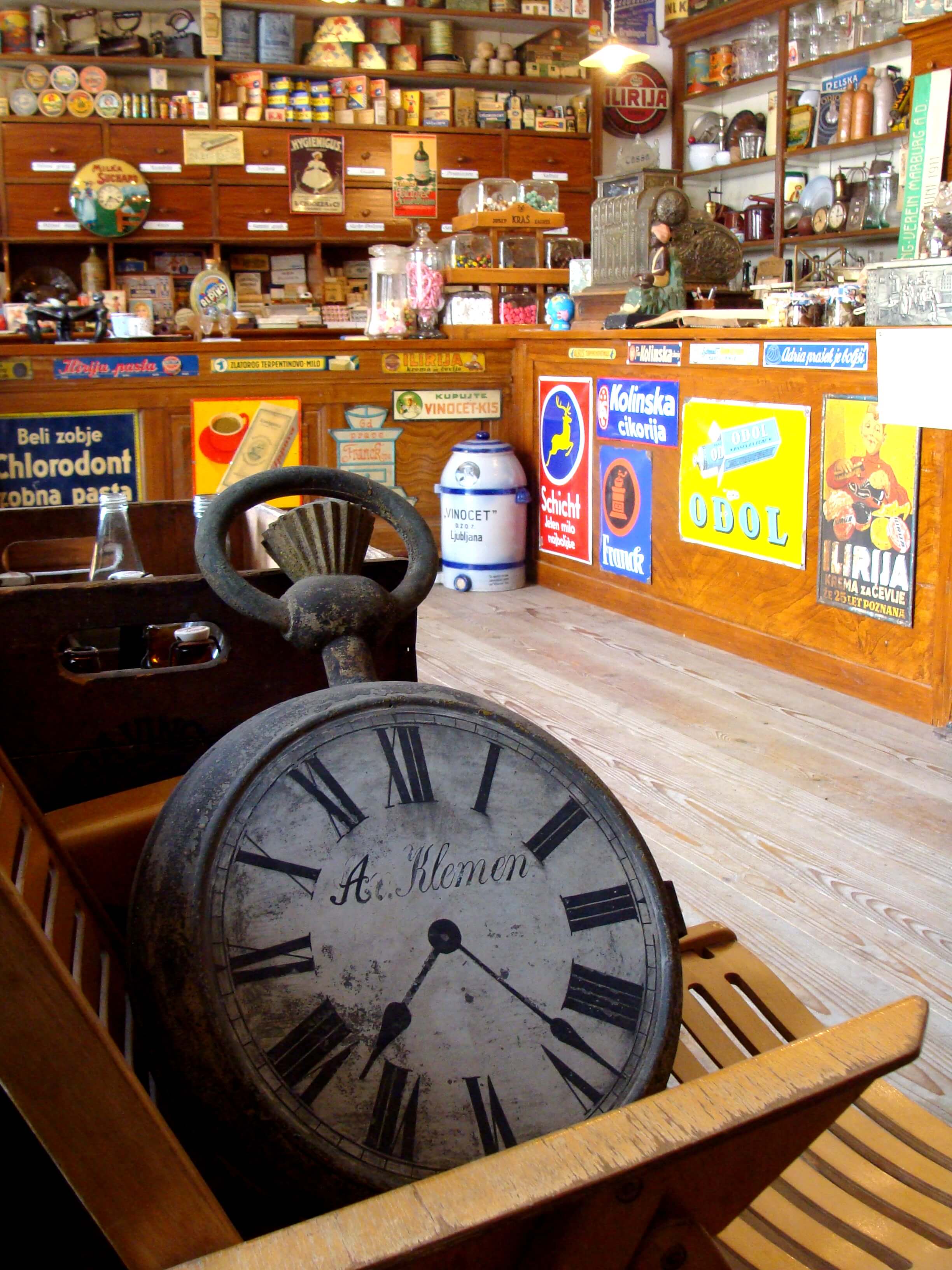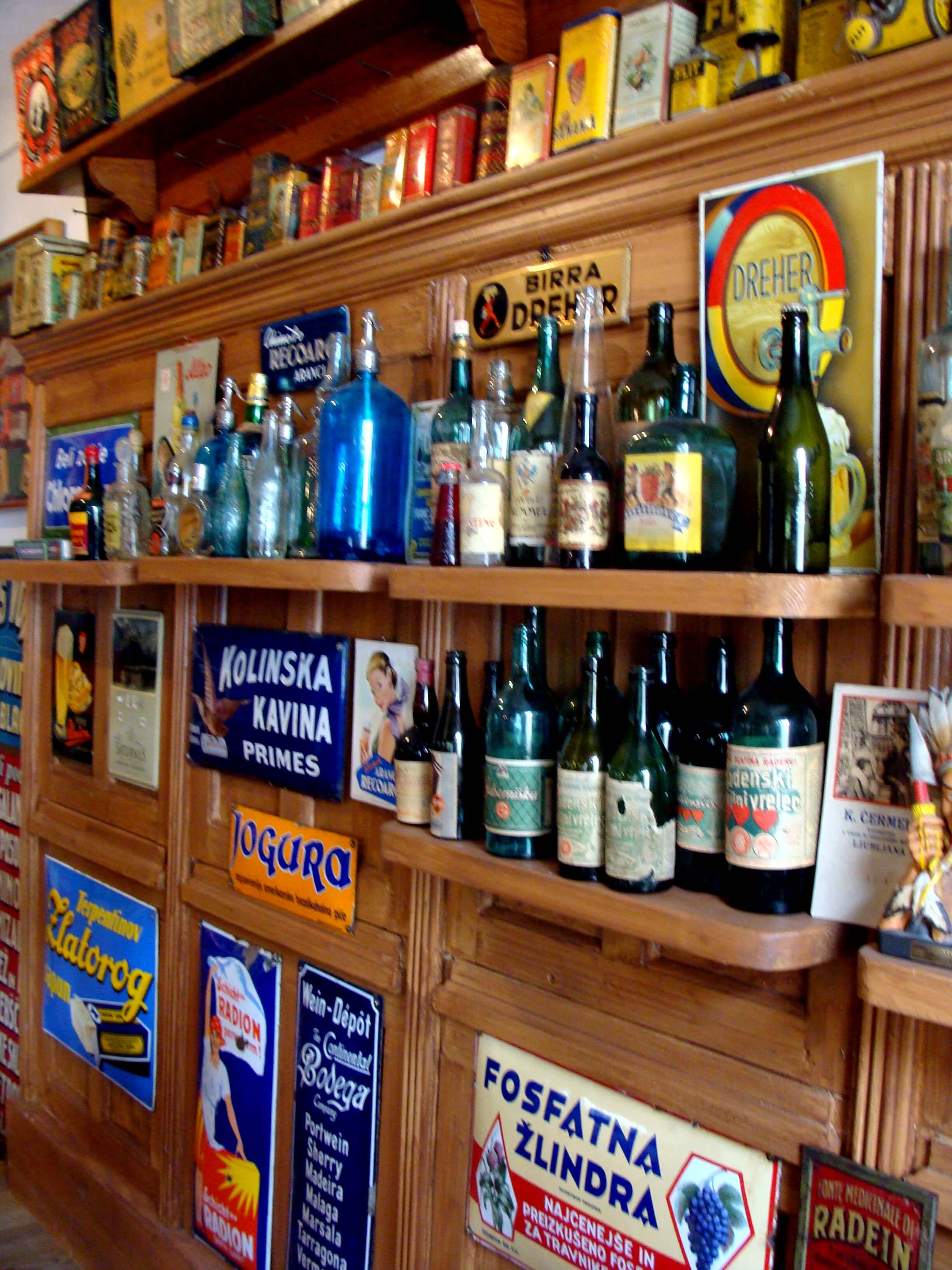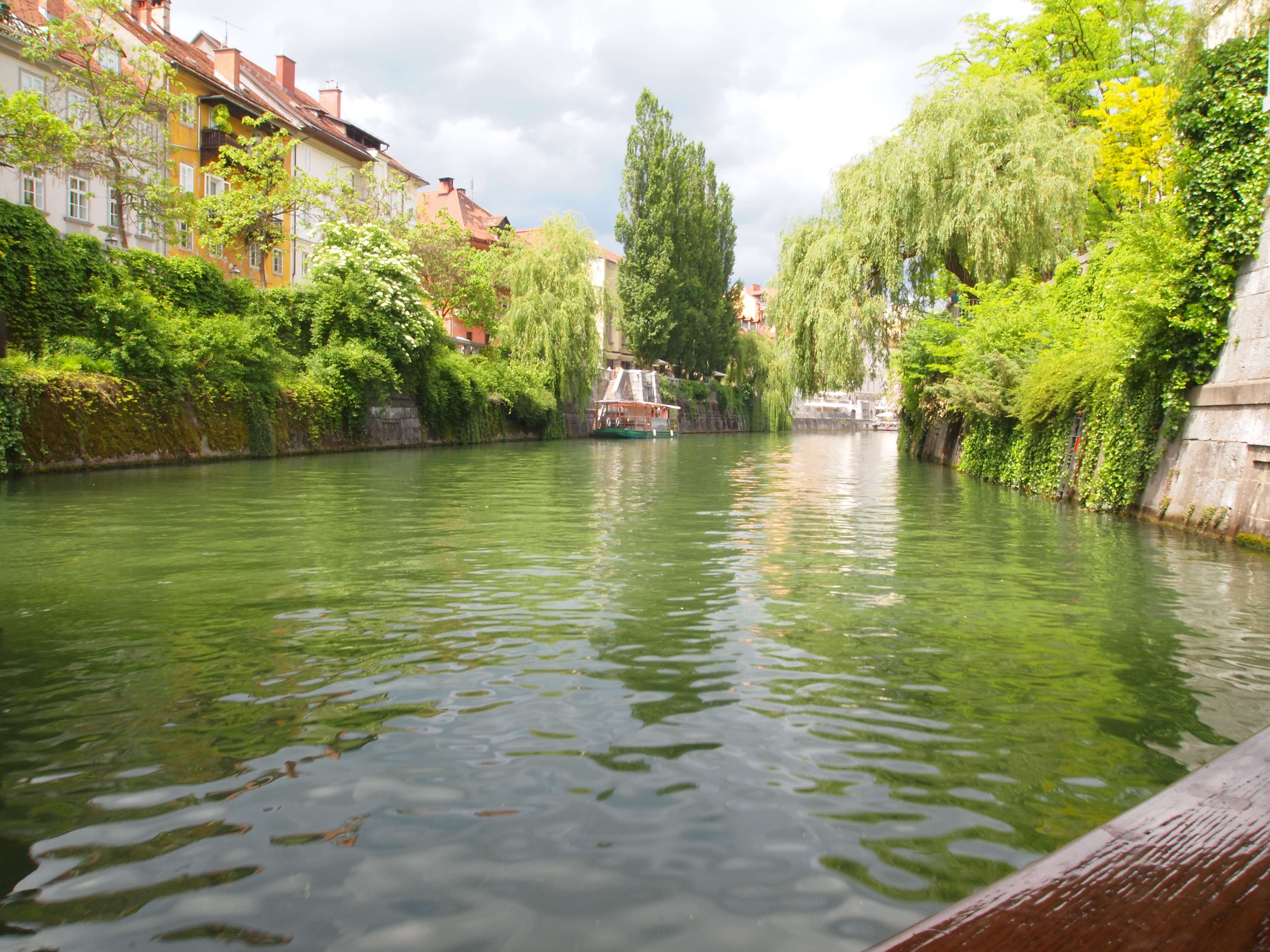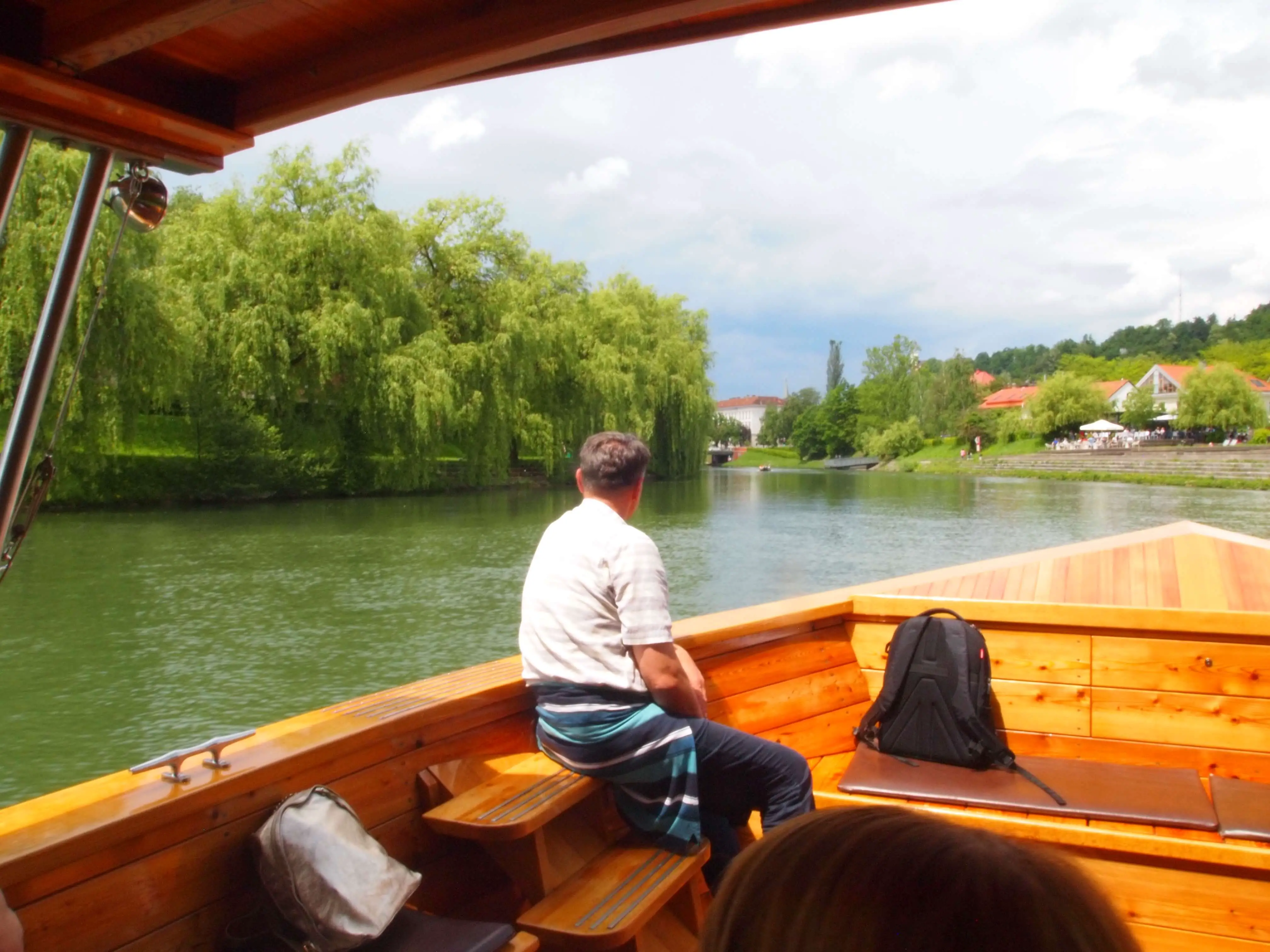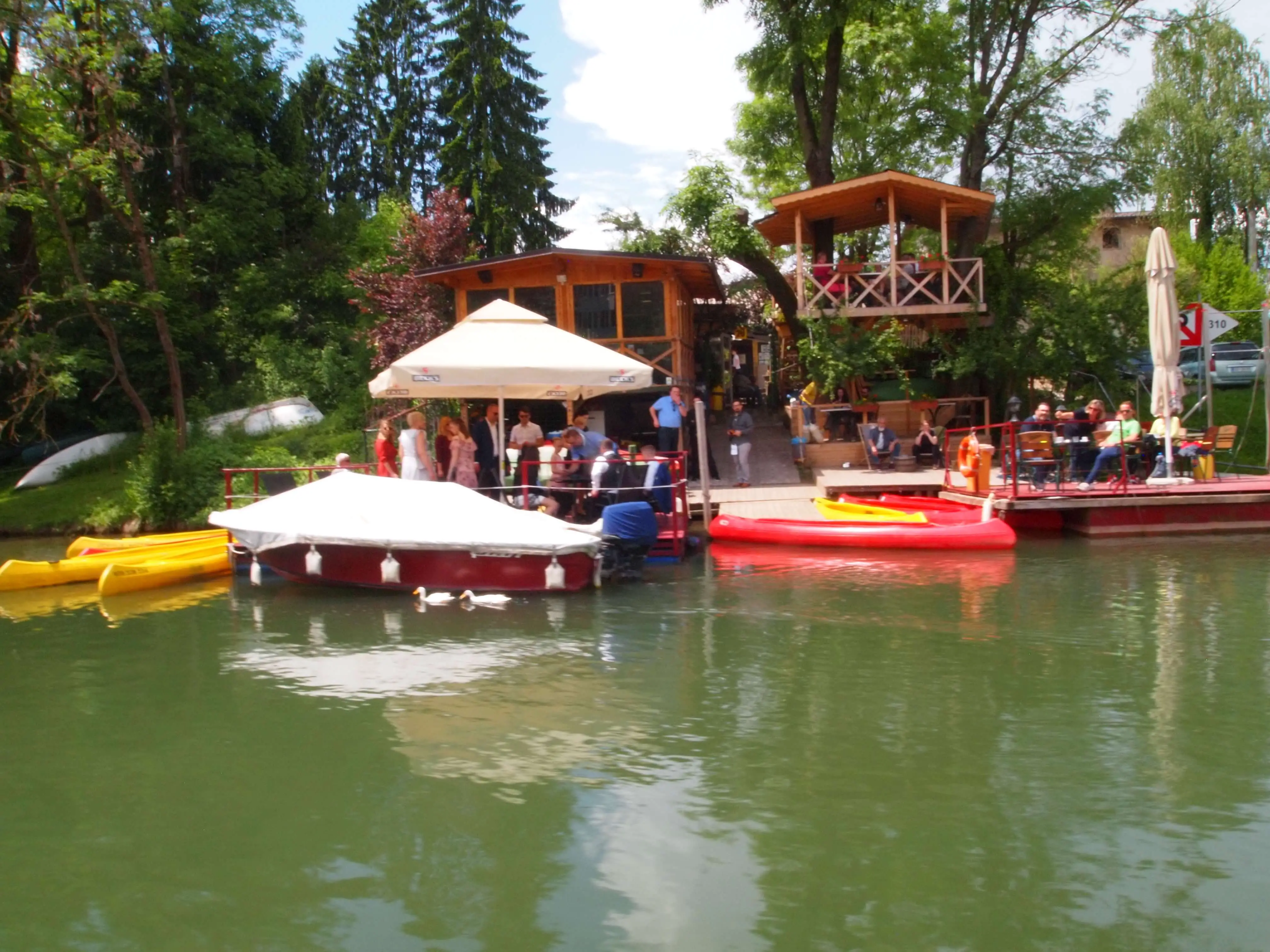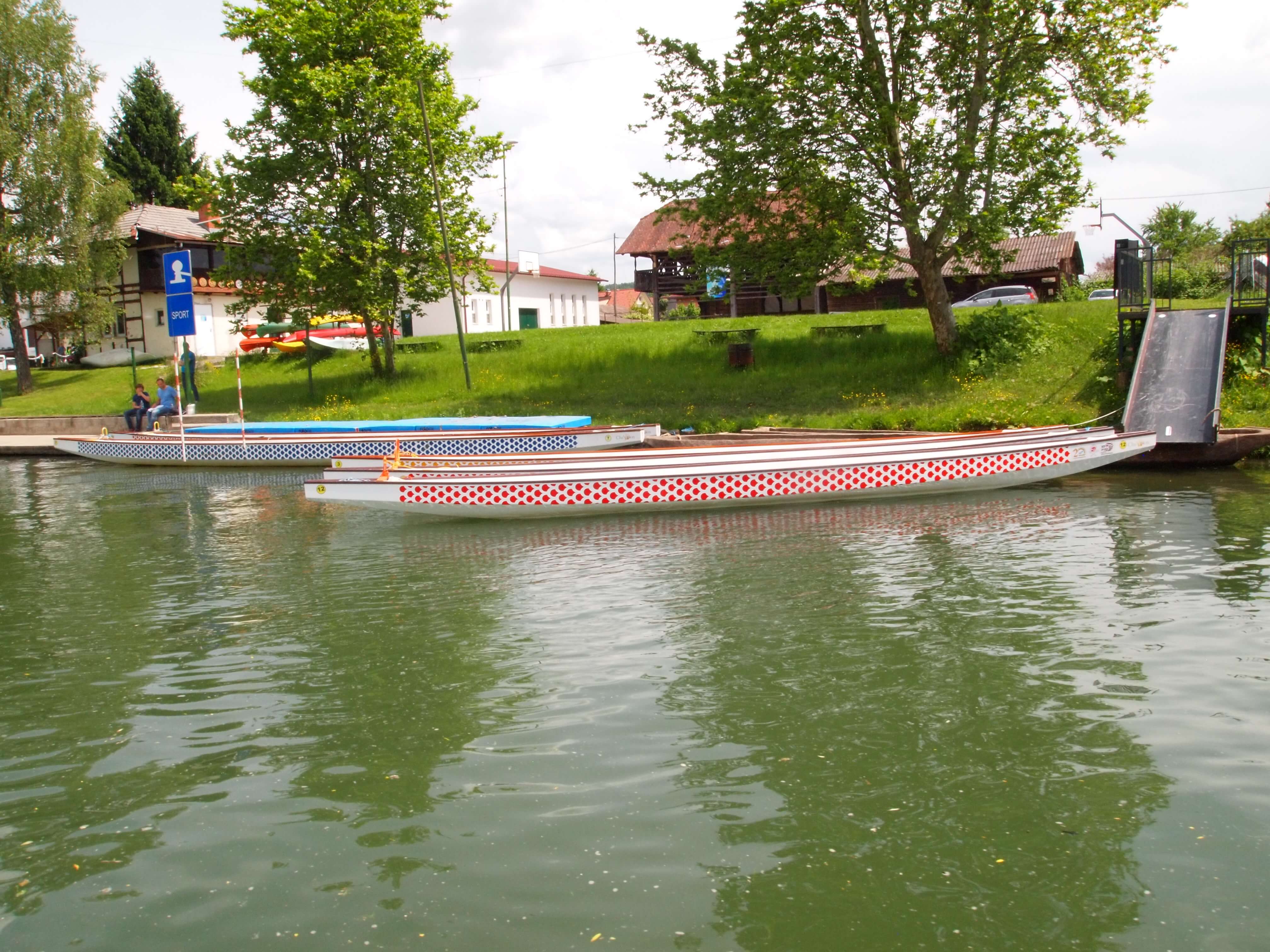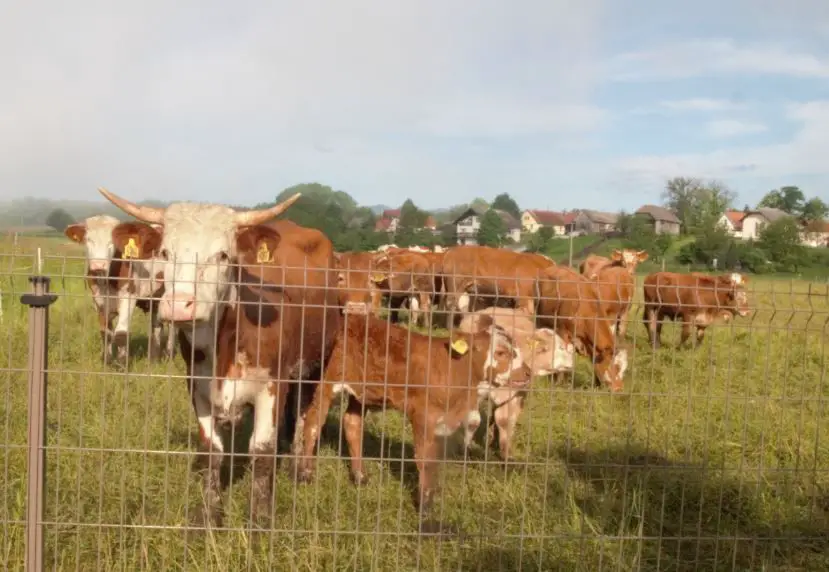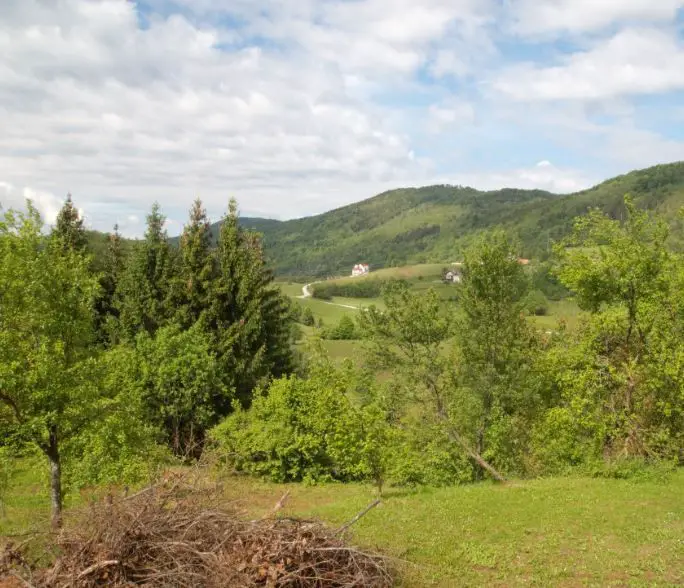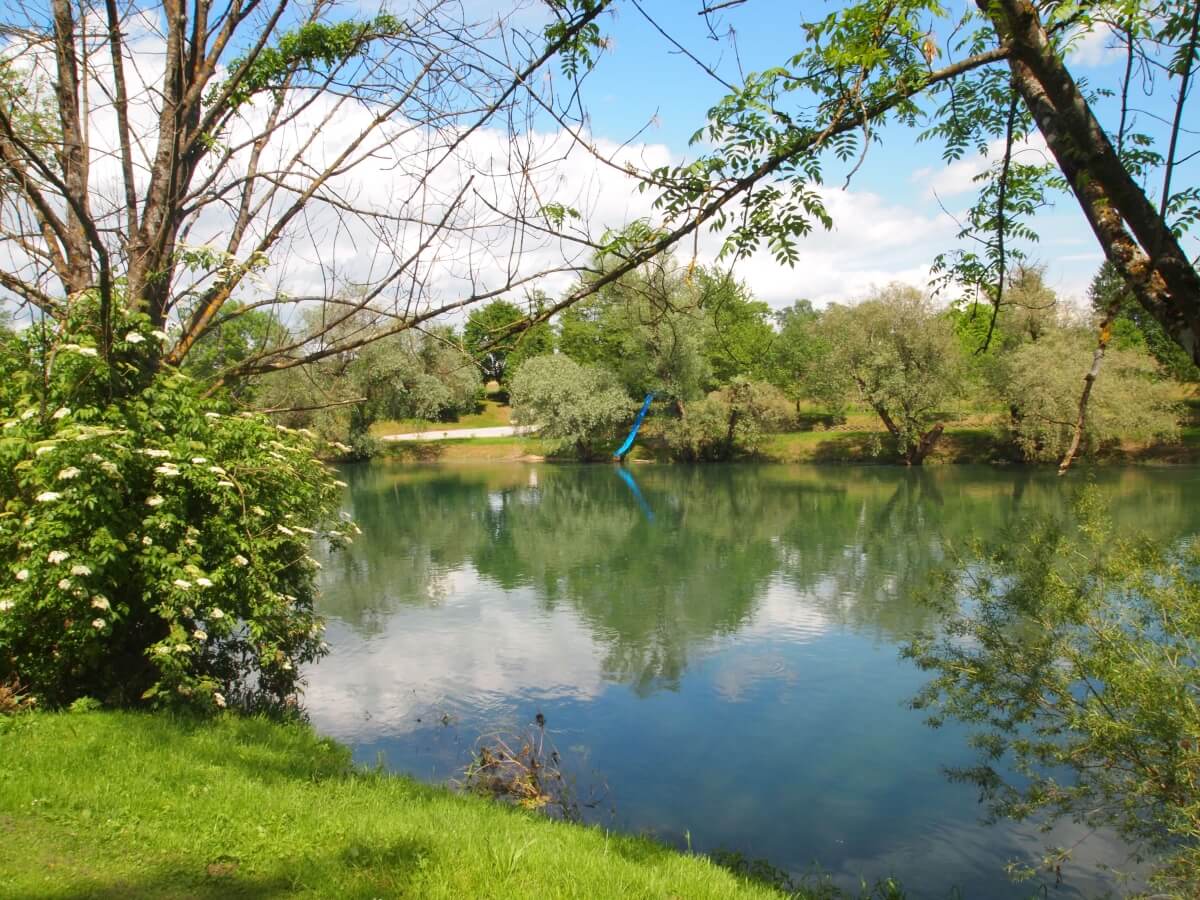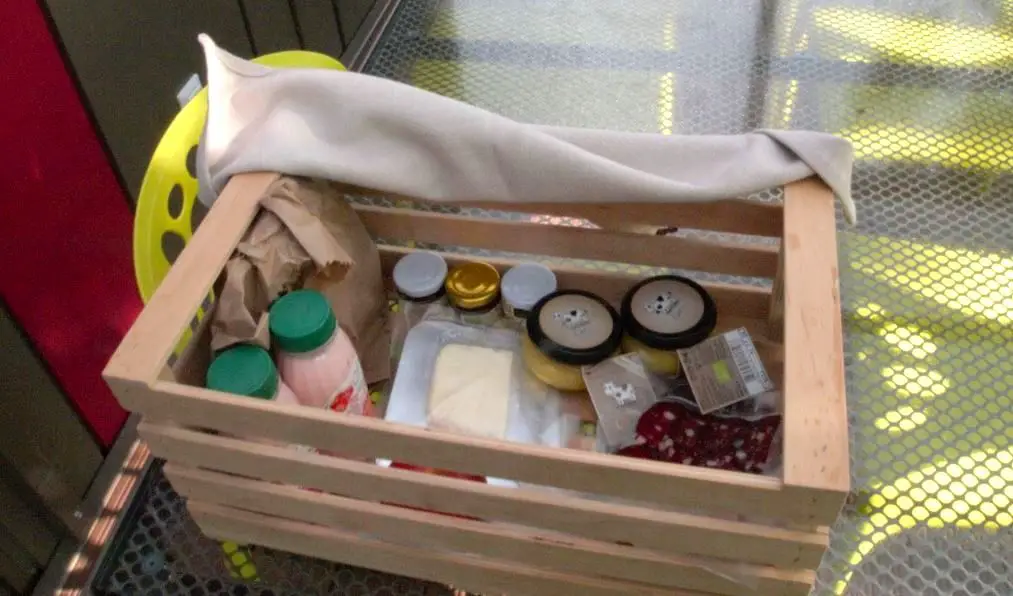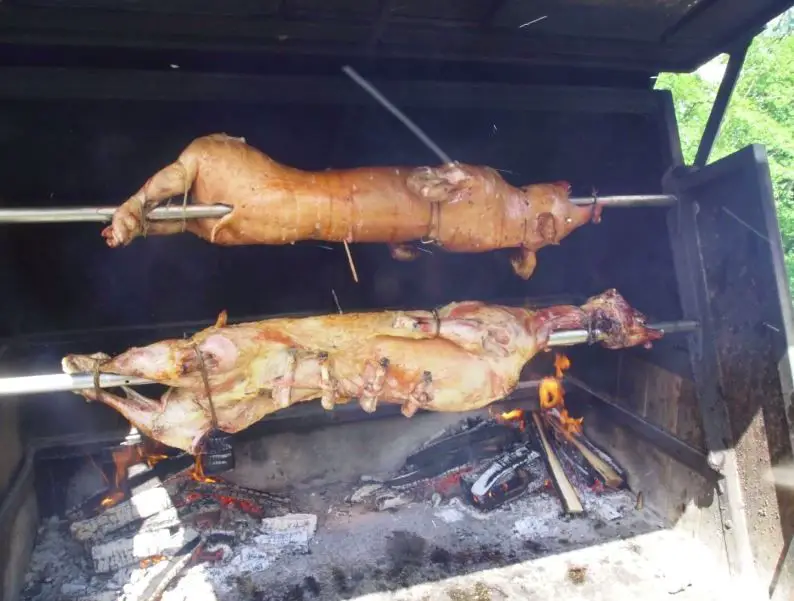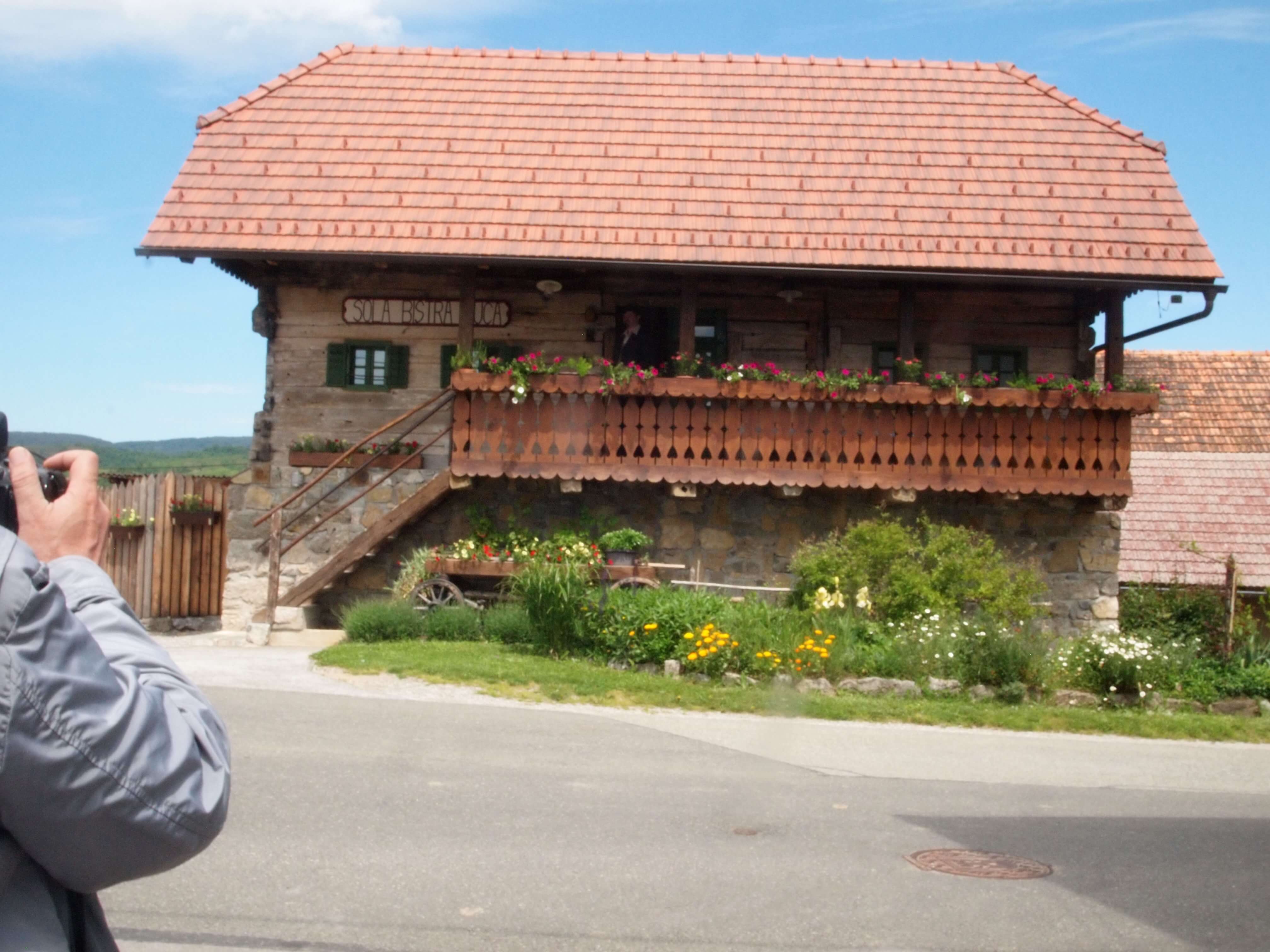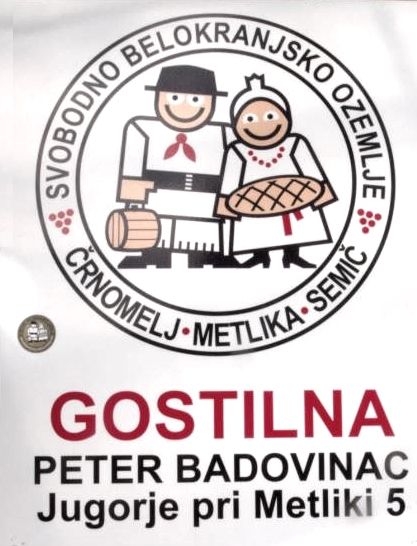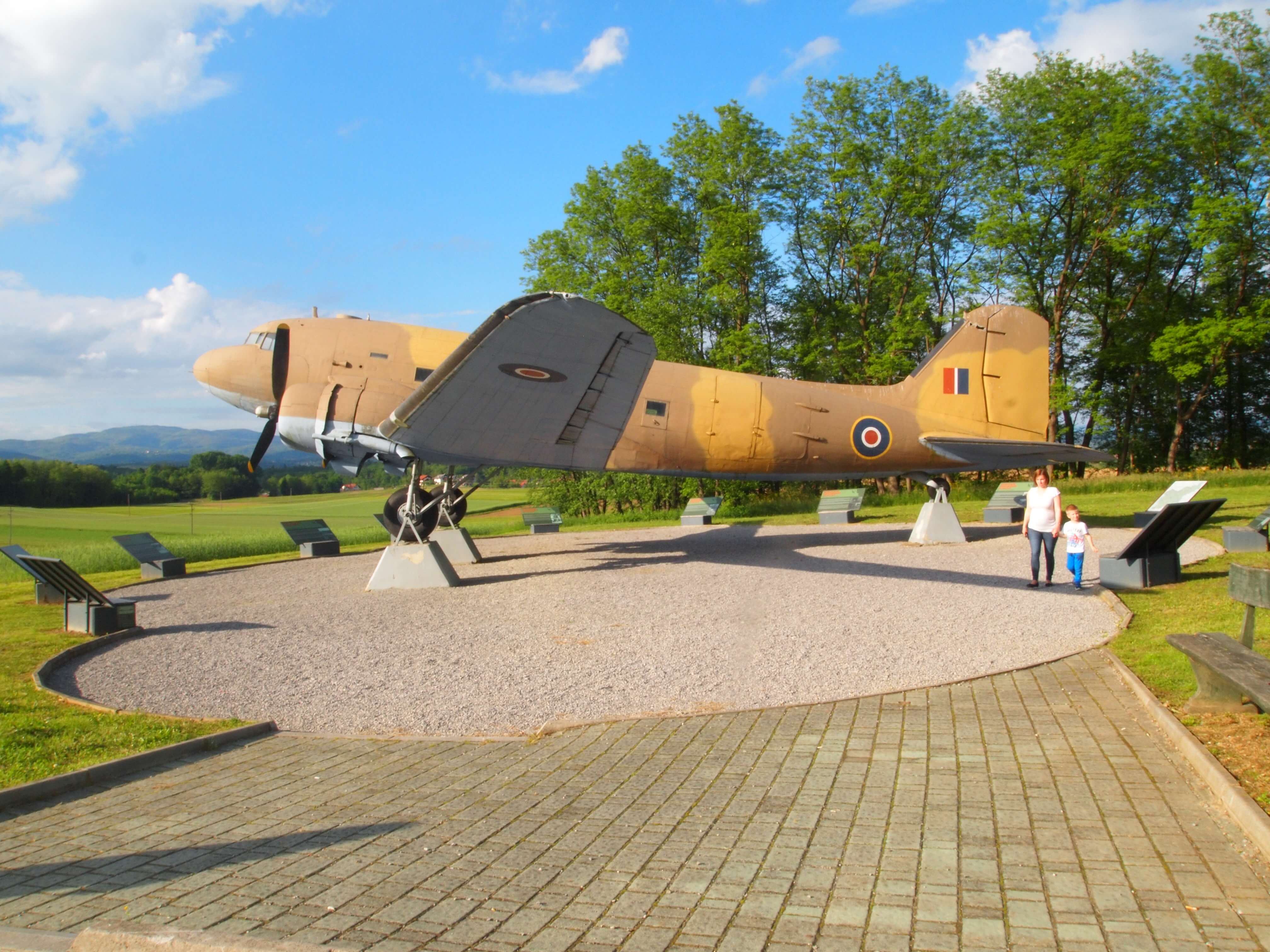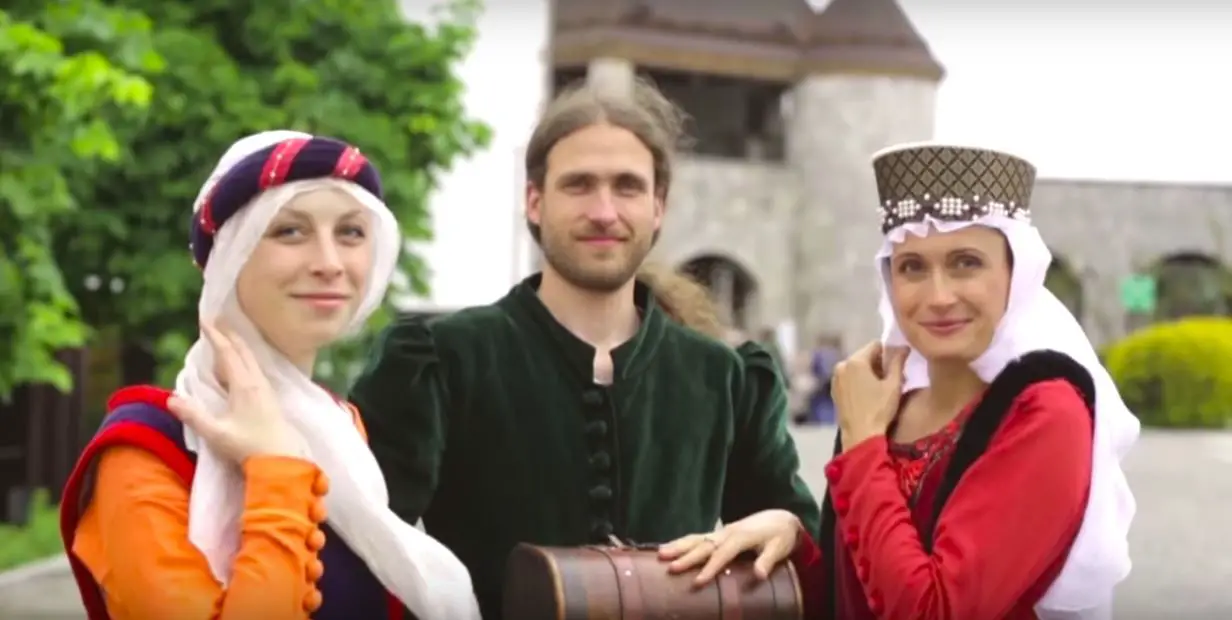Travel
STA, 31 May - A search party is looking for a 23-year-old British citizen who has gone missing in the treacherous, narrow gorge of Koritnica River in the mountains of northeastern Slovenia on Thursday. A day earlier, a compatriot of his narrowly escaped death in a kayaking accident on the Soča.
According to the Nova Gorica police, the man, accompanied by another Brit, dropped his cell phone into the gorge while visiting Kluže fort, an ancient military check point positioned high above the Koritnica.
After realising that he would not be able to reach the bottom of the gorge from the fort, he and the other Brit rode some half a kilometre onward in the direction of the village of Log pod Mangartom.
While his companion waited in their van, the man went to look for his phone, the police said, adding that the terrain there was steep and dangerous, while the Kortinica water level was high due to the rain that persisted in the past weeks.
A search and rescue mission involving the police and the Mountain Rescue Service was launched immediately after the man was reported missing. His friends also joined the effort.
This happened only a day after a British kayaker almost drowned in the Soča river, some 10 kilometres south of the Kluže fort. She was a part of a group of kayakers who went into the swelling river without a guide, the police said in a separate press release on Wednesday.
She was soon turned upside-down by a strong current. She managed to free herself from under the kayak, only to get stuck behind a tree trunk. Members of the group tried to help her unsuccessfully and she was swept away once again.
Fortunately, the young woman managed to get herself out of the water further downstream.
Related: 10 ways to enjoy the River Soča
In the village of Lokev, you can step back to a time and see how people shopped from the 1870s to the 1950s. Fabiani’s Museum Shop is unique in Slovenia, the only fully-preserved and equipped mixed-good store from the era. The museum was opened in 2007, and is in the same space as a store that was opened in 1869 by Jacob Fabiani.
Step inside and you’ll be greeted by a sales assistant from the 1930s who will guide you through the store and answer any questions that you have about the more 7,000 items on display. These include a varied range, such as candy, seeds, shoe creams, baking powder, vinegar, cosmetics, petroleum, stationary, sewing supplies, tobacco products, spices, washing powders, soaps, various types of coffee, paints, enamelled and galvanized containers and many more, all the things you'd expect in a mixed goods store serving a community in the days before supermarkets or department stores.
In addition to the goods that were once sold at Fabiani's there also a collection of old advertising items in the museum, with posters, statuettes, metal and cardboard billboards, as well as many other advertising products from the years covered.
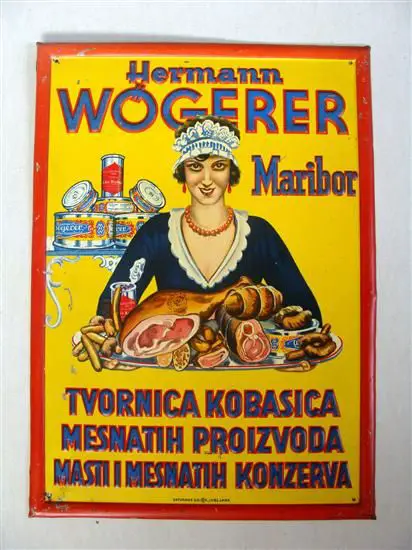
Of interest to anyone who has ever been in a shop or is curious about the past, and especially Slovenian history, a trip to Fabiani's Museum Shop in Lokev can also be combined with two other museums, as the village also has the Tabor Military Museum and the oldest prosciutto factory in the Slovene Karst, Pršutarna Lokev. There’s also the nearby Vilenca cave, and the famous white Lipica horses.
Fabianova muzejska trgovina, Lokev 118, 6219 Lokev. Website
The museum is open on Saturdays from April to November, and group trips are also possible during the week by prior arrangement. However, the owners may not always be there on Saturday, so if planning a special trip it’s best to call or email Miro first to see if the place will be open 00 386 41 976 385, This email address is being protected from spambots. You need JavaScript enabled to view it.
Related: Verba - Yugostalgia, tours and 28 languages in Ljubljana
Life in downtown Ljubljana arranges itself around the river and its bridges, with the Ljubljanica, its regulation and the varied and various architectural interventions that cross it, giving the area much of its charm. But have you ever actually been on the water?
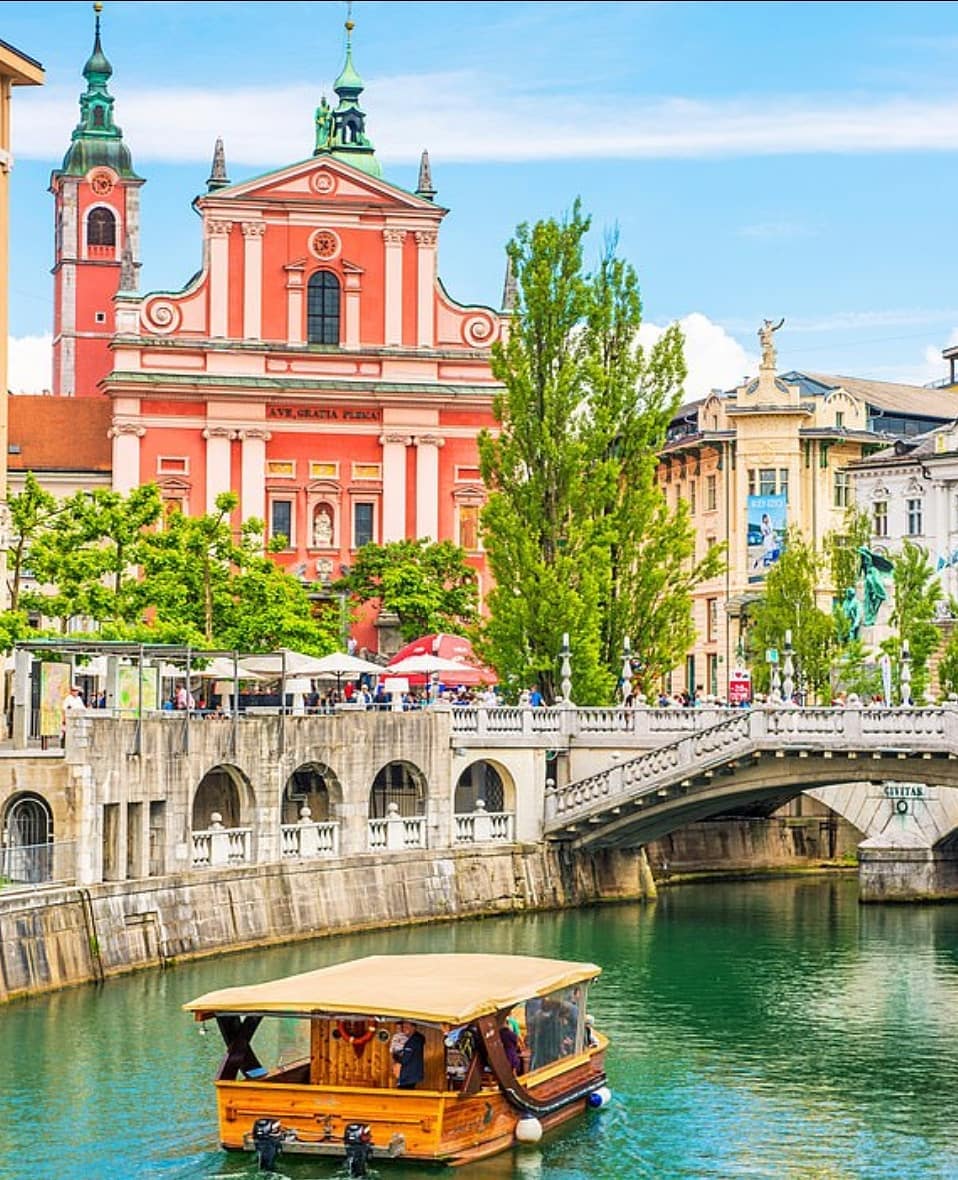
Source: Barka
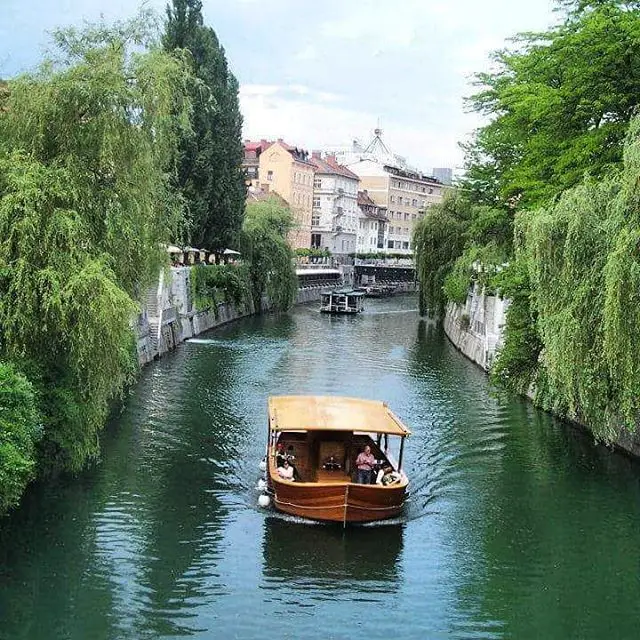
Source: Barka
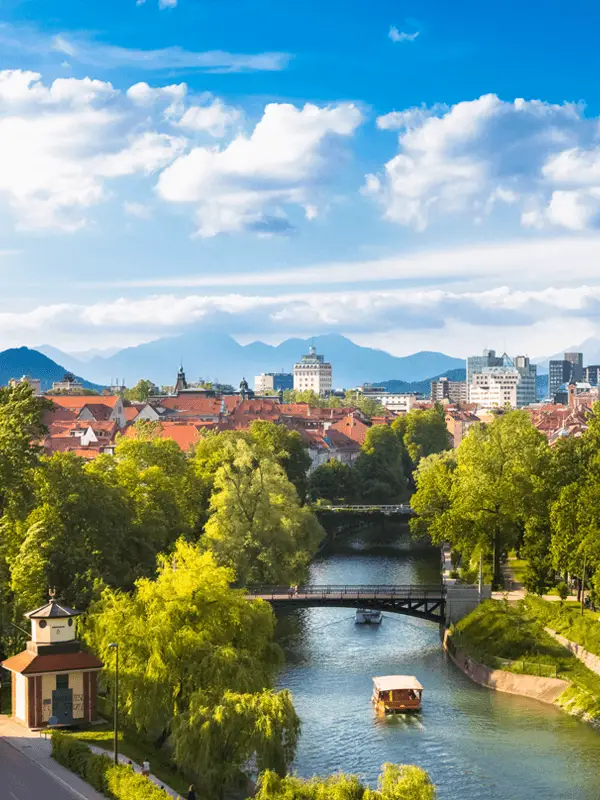
Source: Barka
I have to confess, even though I’ve lived right by the river for some years, and am supposed to engage with my environment, I’d dismissed the boats going up and down in view of my apartment as a tourist trap, little more than floating bars with a captive audience. What could they offer me beyond feeling like an idiot as people watched from the embankments?
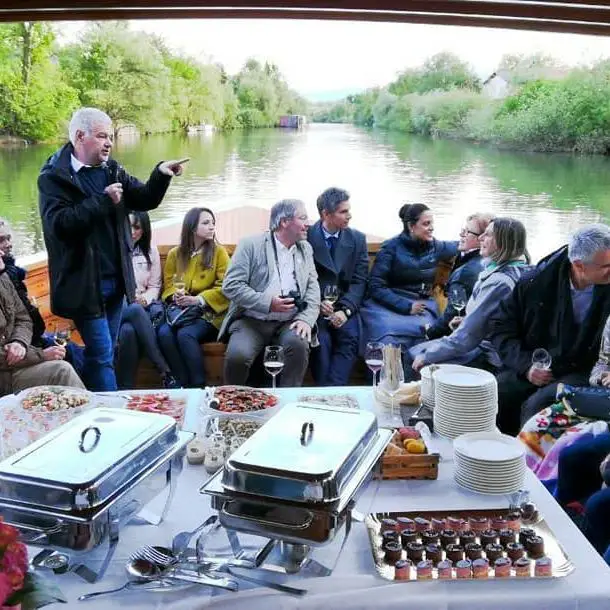
Food can be arranged for private parties, and there's a bar onboard. Source: Barka
Photo: JL Flanner
Photo: JL Flanner
But the other day I finally overcome at least one of my foolish and limiting prejudices, and took a ride on the Barka, which bills itself as the first and only wooden boat on the Ljubljanica, and one that was hand-built in Slovenia. A handsome vessel, as well as the usual boat trips and guided city tours, it can also be hired for romantic rides, closed groups, weddings or other occasions, with the option of full catering and the support of partner restaurants. It’s a nice boat, and – and the photos show here – one the complements the city itself.
The Ljubljana many don't see. Photo: JL Flanner
Photo: JL Flanner
The standard trip, as shown in the video at the end of this story, lasts 45 minutes and leaves from under the market side of Butchers Bridge (the one with the lovers’ locks). From there you head upriver, past Špica, and into the relative wilds inhabited by the canoe and sailing clubs, with idyllic looking homes that make you realise, once again, what a ridiculously nice city this is to live in. If you’re lucky you may even see some nutrija, a large water rodent that also makes its home here.
Related: In town this week? Check out what's on in Ljubljana here
Turning at Livada, the boat then heads back to the centre town, where you’ll get a good of the Castle, as well as the various bridges that connect the two parts of the Old Town. The trip then ends a little after Dragon Bridge, as it must, due to the sluice gate a hundred metres or so beyond this (a work by the architect Jože Plečnik, the man behind Špica embankment, the Triple Bridge, and Market Arcades, all seen on this trip).
In short, a boat ride along the river is highly recommended, and – to my surprise – perhaps even more so for residents than tourists, although the latter will still find much to enjoy from being on the relatively clean water, enjoying a cold beer or glass of wine, looking up at the people on the riverbanks and wondering if they know what they’re missing. You can learn more about Barka’s trips here, or just look out for the nice wooden boat.
My workdays are hectic enough that if I go on an active vacation I’m likely come home as worn out and stressed as when I left. So perhaps it’s my work life (or age), but I found the peace and quiet of the tiny Big Berry “resort” – seven small riverside homes in Bela krajina (aka White Carnolia, and the k in krajina should be lowercase) – exactly what I needed, even if I wasn’t able to express those needs until they’d been met.
Started in 2016 as glamping destination for travellers, site for teambuilding exercises, and showcase for Hosekra’s prefabricated homes, the place operates under the slogan “the luxury of freedom”, and for me that meant freedom from demands on my time and attention. Yes, the resort has WiFi, but because of the metal structure of the homes the signal needs to be boosted in each unit, which means you can have the signal turned off and you’re free to stay offline when inside. So I just checked my emails at the start and end of each day in the main building, and even without me the world kept turning.
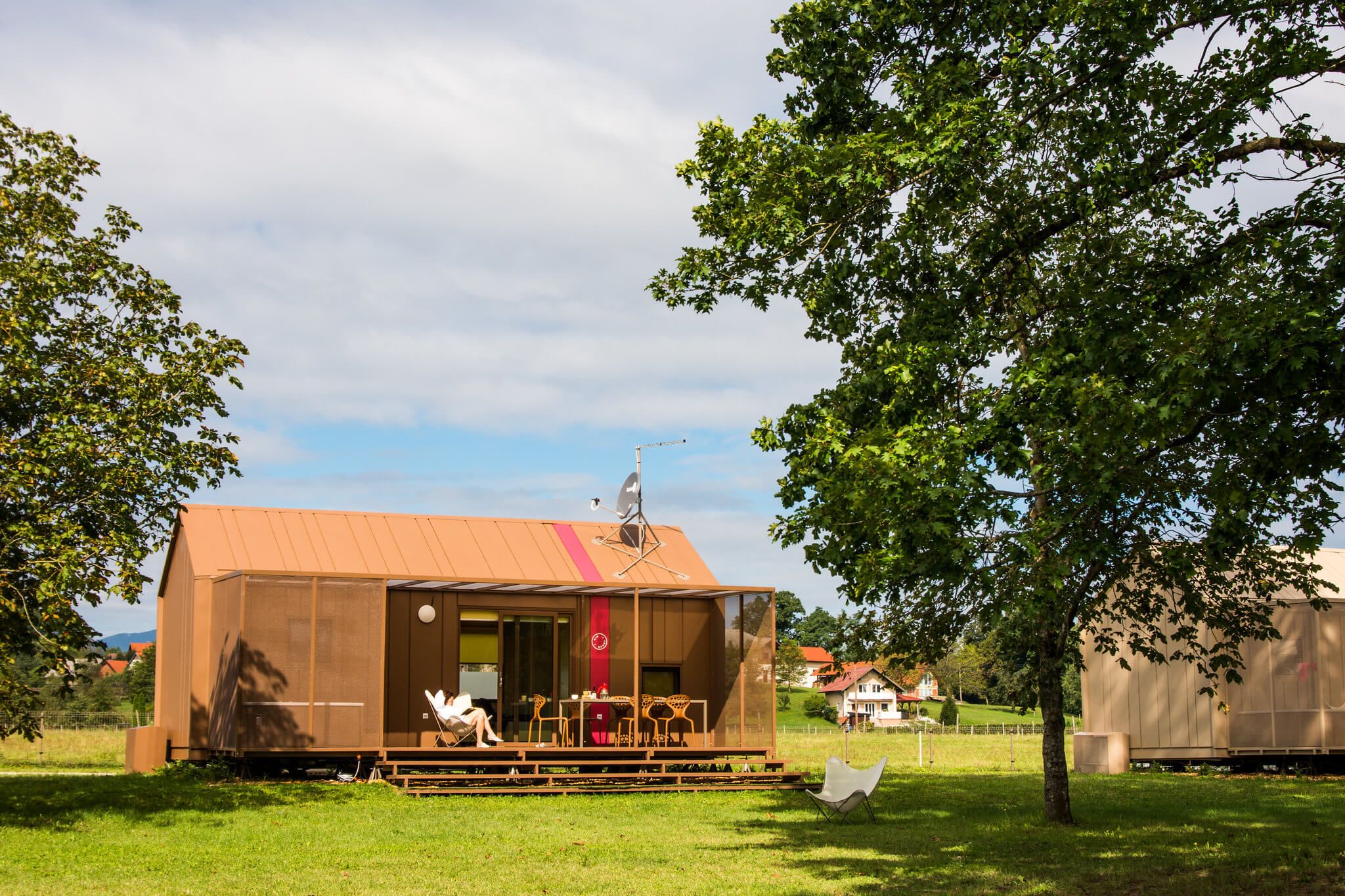
One of the homes. Photo: Big Berry
There’s a field between you and the nearby village which has cows grazing in it, and if you’re lucky they’ll wander over and start mooing in the morning, a nice alarm clock that you’re free to ignore. Photo: JL Flanner
Clean and green. Photo: JL Flanner
Croatia, and a small "beach" and blue slide, on the other side of the river. Photo: JL Flanner
Sited right by the River Kolpa, which divides Slovenia from Croatia, the resort sits between the small villages of Primostek (Slovenia) and Jurovo (Croatia), giving you the option of simply walking, cycling or swimming to another country – with no border controls at the time of writing. Indeed, several of the staff are Croatian and cross the border twice a day, while others include individuals from Portugal and Brazil, the latter part of the company’s internationally minded internship programme.
But what can you do here, other than turn off, tune out, and relax? It’s not that there’s nothing to do – there is, and we’ll get to that – it’s just there’s nothing you have to do, no must-see sights or “10 essential experiences”. The property is big enough that you can wander around, sit on the grass, read, draw, do yoga, enjoy the river and so on, with the Kolpa enabling swimming, canoeing, or supping (even fishing, with a licence). If you want to get further away, but still avoid driving, there are bikes you can use to explore the area. In season there are also activities offered for guests, such as wine tastings and other things from local partners.
Only breakfast is provided, with all the food ordered from outside. You choose from a menu the day before and the next morning a wooden box is sitting on your porch full of items from local producers. Bread, cheese, salami, milk, yogurt, fruit, jam, honey and so on, with coffee and tea supplies in the kitchen.
Here you might notice a little too much packaging, but that’s a health and safety issue, and one the management would like to find a way around. Photo: JL Flanner
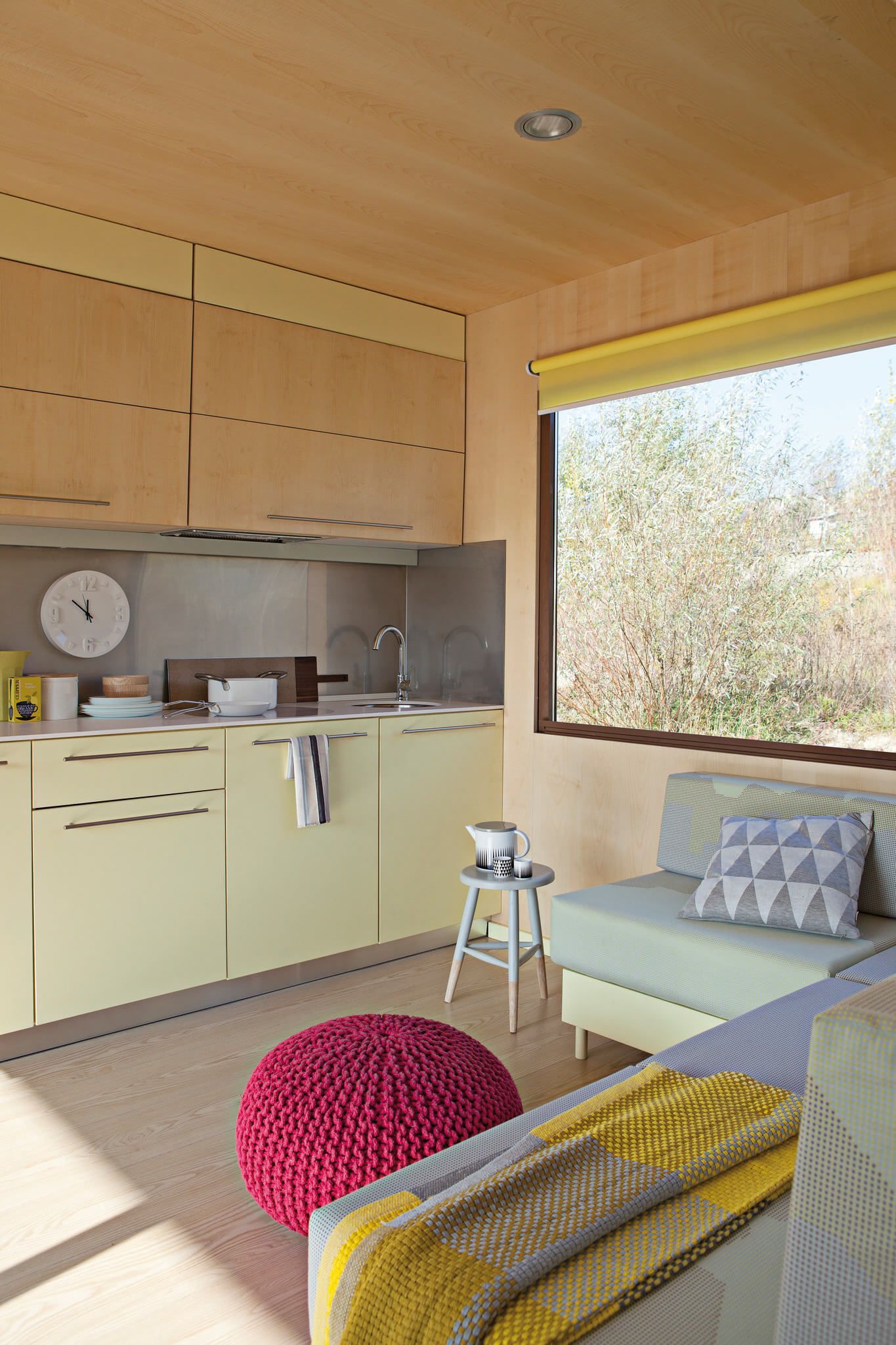
Inside one of the homes. Photo: Big Berry
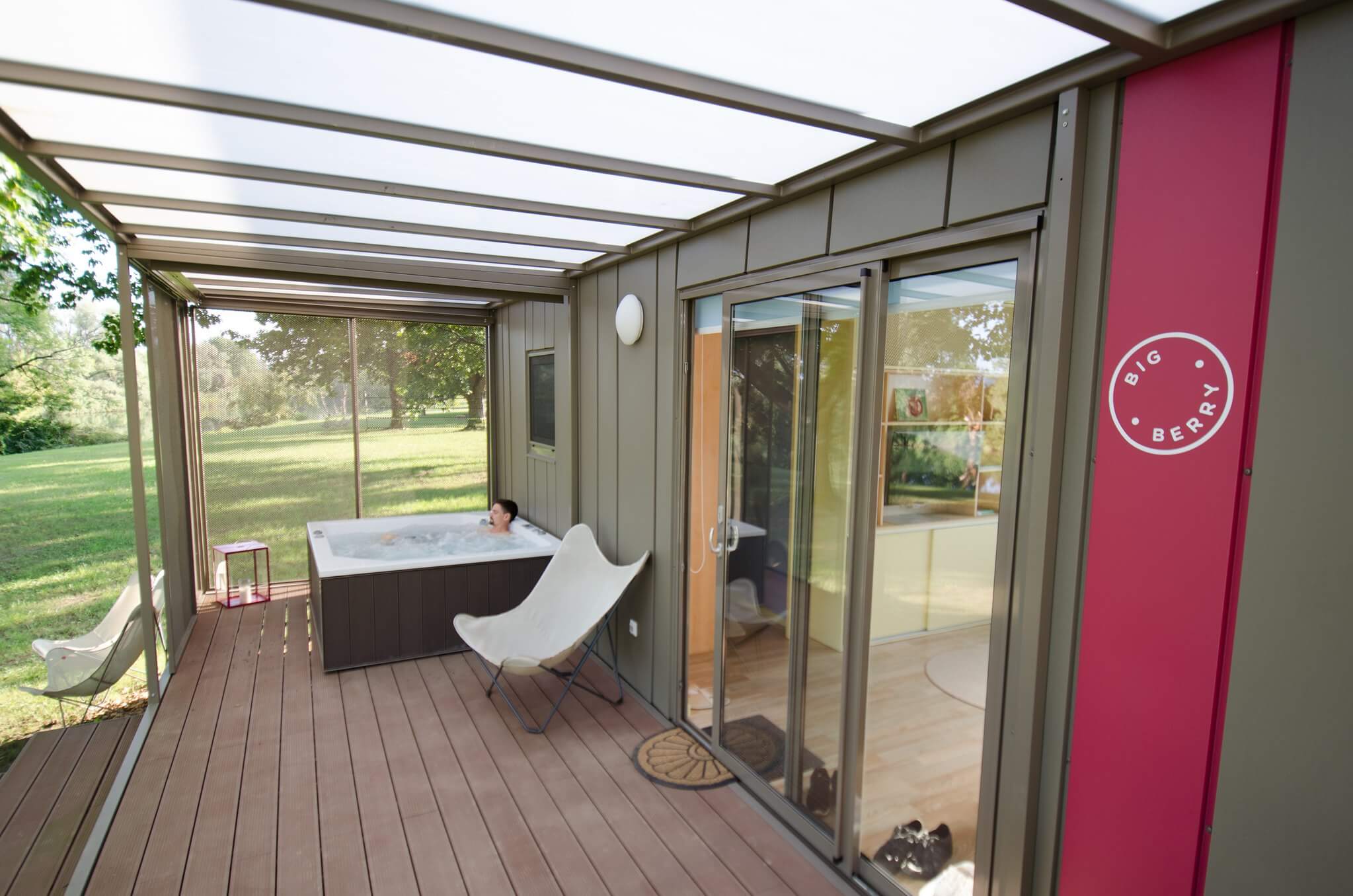
Each home has a jacuzzi. Photo: Big Berry
After breakfast you’ll have to make your own arrangements for lunch and dinner. If you want to fully disconnect you could simply stop off at a store or market on the way to the resort and stock up the large fridge in your new home, and I certainly recommend bringing along some snacks, as well as buying some wine from a local cellar. But the area is so beautiful, the green, rolling hills so tempting, that a trip out for a meal is no bad thing. Especially since the team at Big Berry know the place well, and will be able to recommend something to enjoy (a knowledge base that extends from food and wine to all the other things the area has to offer).
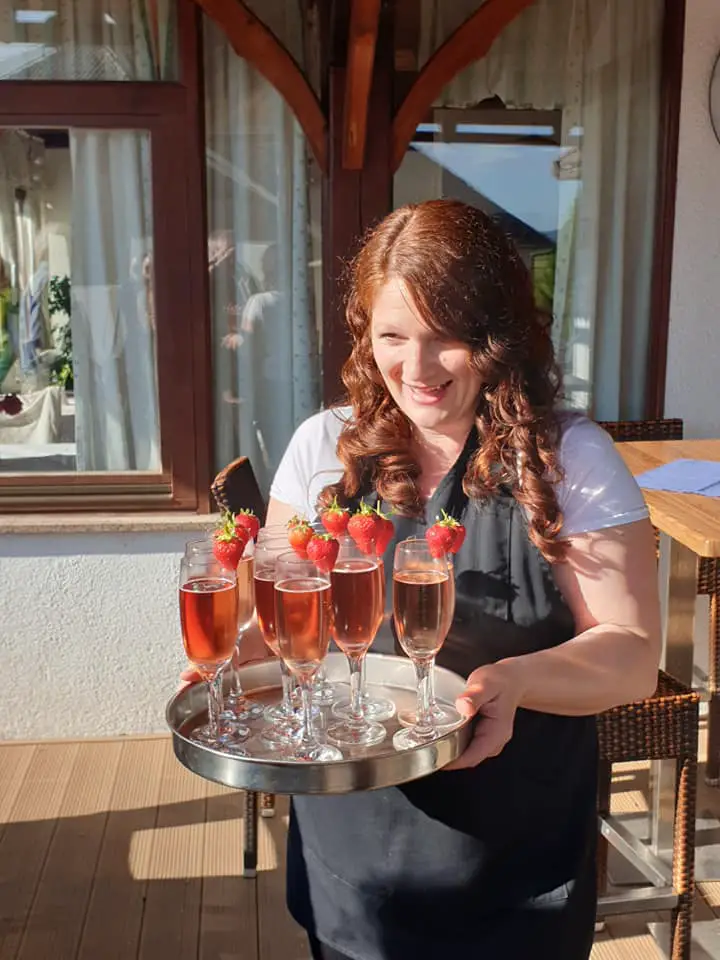
Andreja Drakulič Veselič with some glasses of white wine, sparkling mineral water and juice, called a Mussolini. I asked around and it’s a name for a spritzer that seem to have been especially popular in this area in the post-war years, but one that I’ve never head of elsewhere in Slovenia.
The group I was with, which included a number of travel journalists from Slovenia and Croatia, went to Gostišče Veselič and tried a varied menu that came with – as all meals in Bela krajina must – pogača, a flat round bread topped with salt and cumin and scored with lines, making it easy to tear off in chunks. This went well with a fresh salad, clear beef and noodle soup, a creamy garlic soup, a plate of meat, štrukelji, fried cheese potatoes and other hearty fare, followed by a dessert of fried dough (think donut pieces), caramel sauce and vanilla ice cream. We were then offered a small dish of something unusual – garlic and pumpkin oil ice cream. It’s not something I’d order a bucket of, but definitely worth trying and sharing, with a “wow” factor that I kept returning to.
Photo: JL Flanner
That was the only real meal I had off-site in my two days at Big Berry, with my appetite for the second day being taken up by a whole suckling pig and lamb that were roasted at the resort on spits, a speciality that can also be had, by prior appointment, at many local restaurants (as above, just ask the staff and they’ll have an answer). There’s also a barbecue area if you bring your own meat and vegetables.
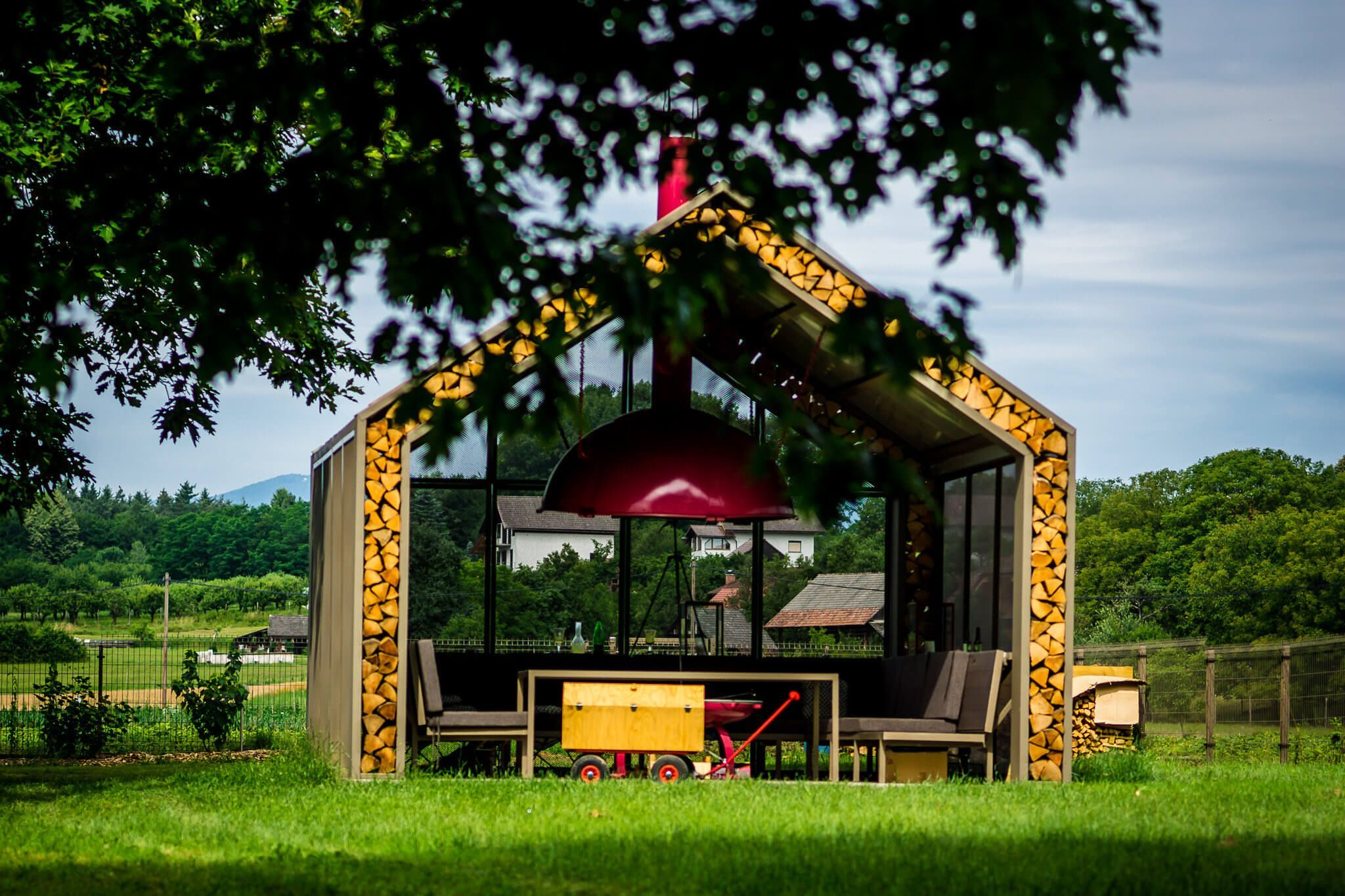
The onsite BBQ area. Photo: Big Berry
I had two memorable cellar visits and tastings. The first was to Vinska Klet Prus (Prus Wine Cellar), in Metlika, an event that my fellow travellers later told me stretched on for at least 15 of the vineyard’s 45 wines. All I know for sure is we didn’t get back to Big Berry until midnight, with my notes becoming increasingly enthusiastic, erratic and illegible as the evening wore on.
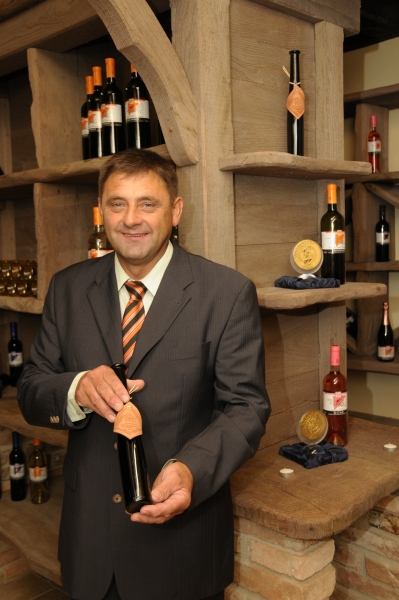
Mr Prus and some of his work. Photo: vinaprus.si
We were guided through the bottles by Jožef Prus, a 5th generation winemaker whose collection of medals, certificates and photographs with “wine queens” attests to the quality of his production. A man who loves his work, and his wine, Prus was able to bring each glass alive as we swirled, sniffed, sipped and savoured all the standard varieties as well as some novelties, like orange wine – a white that gets its colour from maceration – and Beli Trio, a mix Muscat, Traminac and Sauvignon that I’ll be looking for in stores. To that end, if you see a Prus bottle on the shelves called Svetovno Vino (World Wine) then don’t be put off by the name. It’s a well-made Cabernet Sauvignon that, due to the strict and arcane rules that govern the wine world, can’t be sold under that name, even though the vineyard has been producing it for decades. But Mr Prus follows his heart, and is a wine-maker whose bottles are worth seeking out.
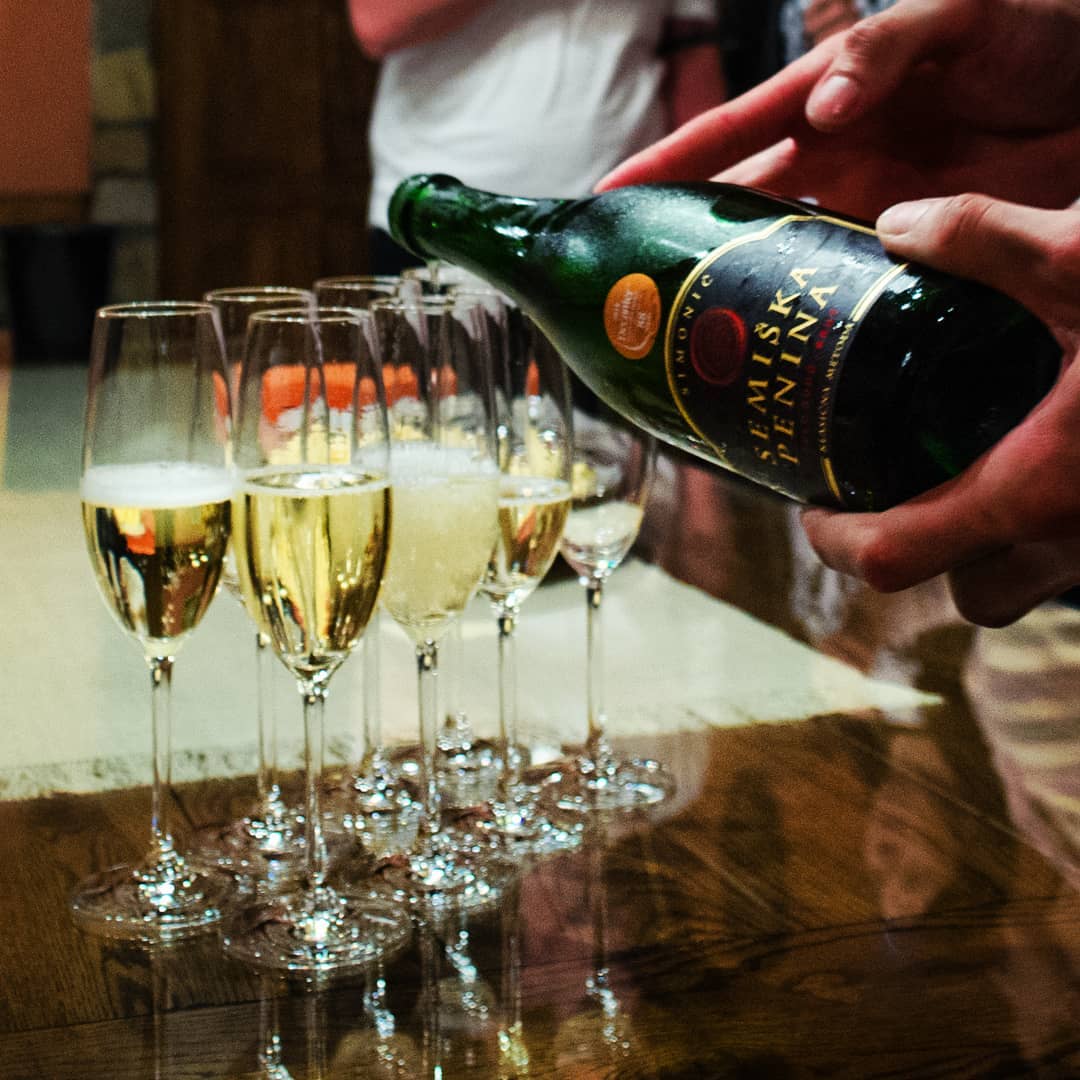
Photo: Semiška Penina
The other cellar visit was a mid-morning trip the next day to Semiška Penina. Penina, aka sparkling wine – champagne without the protected designation of origin (“PDO”) – is my favourite, albeit because it’s the one closest to beer. This was thus a magical trip, with a short tour of the cellar before the main order of business, tasting some of the company’s nine varieties. True, a penina tasting won’t take you on the same tour of colour and flavour that you’ll get at a place serving red, white, rosé, orange and ice wines, but will delight anyone who likes bubbles (unless, and I travelled with one such a person, you can distinguish between big and small bubbles and love the latter, while disliking the former). I had a great time.
Osnovna Šola Bistra Buča is in a charming building that seems typical of the area. Photo: JL Flanner
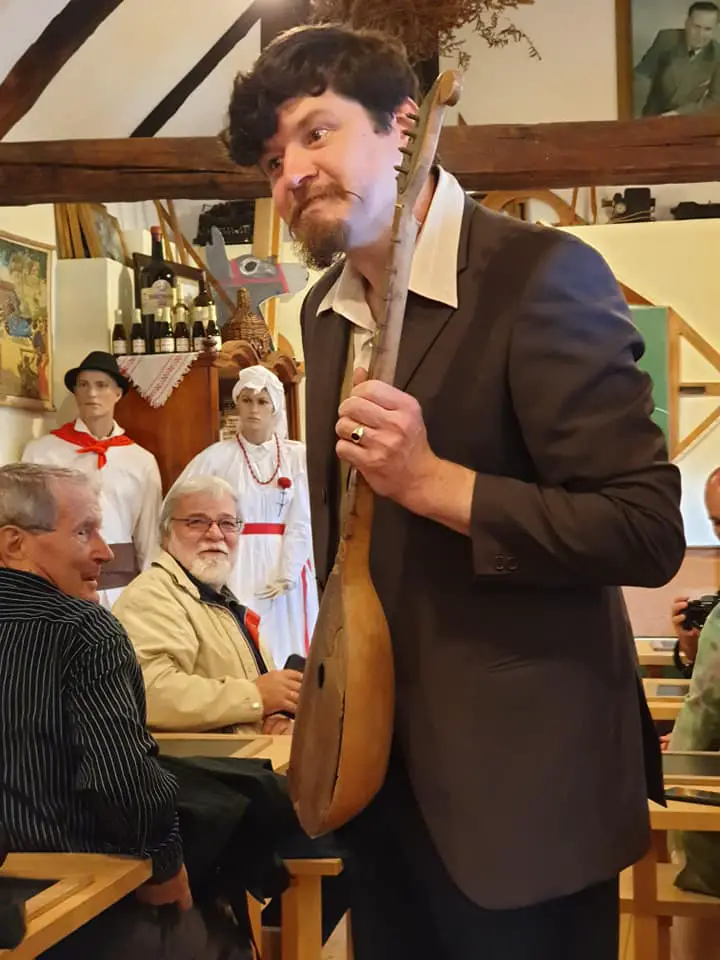
The teacher is always right in 1957. Photo: Paul Bradbury
Because I was travelling with Slovenians and Croatians we also made a stop at Osnovna Šola Bistra Buča, a charming building with a classroom from the 1950s and a teacher to match. Played out via the character of a strict but comical pedagogue, visitors will experience an entertaining lesson based on the region, it’s history and customs, and even if I didn’t understand every word the laughter of the others told me all I needed to know. So don’t plan a trip here if you can’t speak Slovene, but if you can then put it on your list of fun but not essential things to do in the area (you did, after all, come here to do nothing).
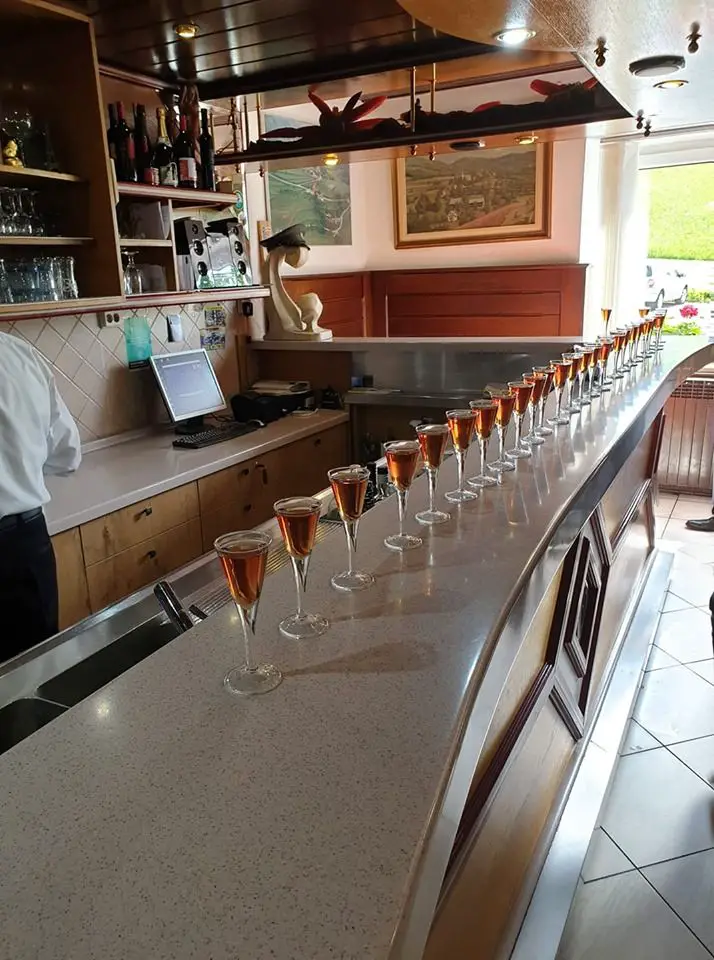
After a few glasses of karapampoli you'll be ready for your Bela krajina passport: Photo: Paul Bradbury
We also stopped for a snack at Gostilna Badovinac, a restaurant that’s been in the same family since 1896 and kept enough customers happy that the owners have long since been able to follow their passions and not worry about chasing the market. In addition to presenting local food in its purest form, one such passion is karapampoli, a schnapps made with over 30 ingredients that the current reigning Badovinac will be happy to list for a few seconds before waving his hands with an “and so on…” Delicious and no doubt good for almost anything, it’s also very strong, so don’t have one if you’re driving – Slovenia has strict laws and the roads are narrow and windy. Do, however, consider picking up a bottle to enjoy back at Big Berry or elsewhere, as it’s only sold here.
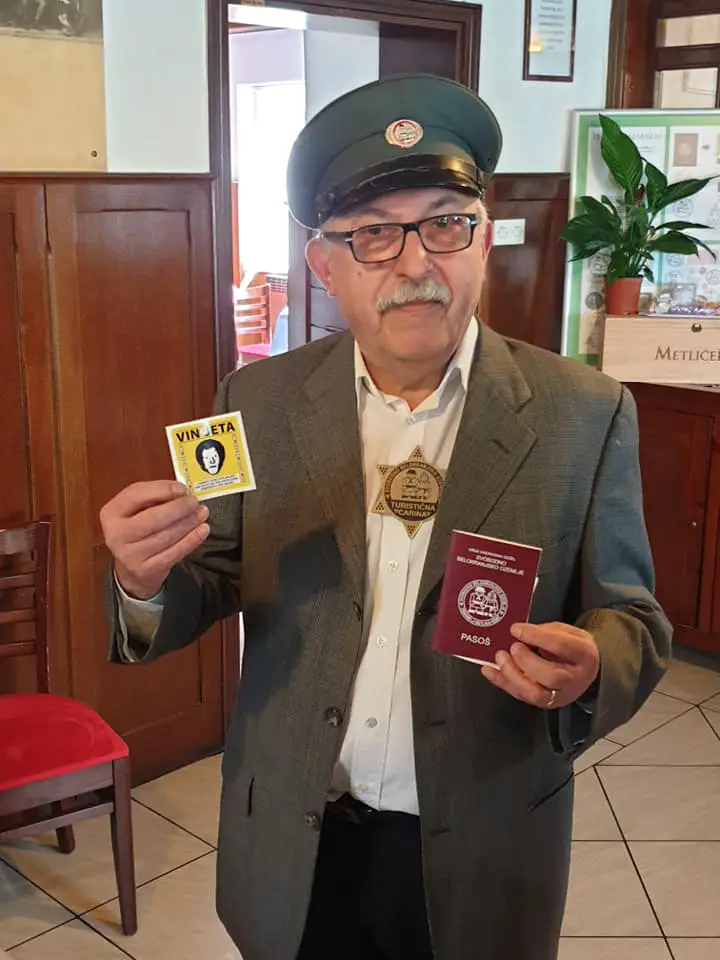
"Papers, please". Photo: Paul Bradbury
Another passion the family pursues is more quixotic, but also explains some of the charm of Bela Krajina, and some of what makes it distinct, as all regions are, from the others. The restaurant serves as the check point for entry into the Free Territory of Bela Krajina, or Svobodna Belokranjsko Ozemlje. This is for two reasons. One is the fact that in the Second World War the region was a centre of anti-fascist resistance, home to the Yugoslav Partisans and the site where many Allied prisoners escaped to (as recounted here). Another is part of a broader tourist promotional effort, whereby visitors can purchase a passport (€6) for Bela Krajina that gives discounts to many businesses and attractions, and also collect stamps as they travel the region. The details entered in the document include your name, official ID number, nationality, waist size (guessed) and nose colour.
A sign showing the Gostilna's status as a checkpoint for entry to the free territory of Bela krajina. Photo: JL Flanner
Those interested in World War Two history will many stories in the region. Photo: JL Flanner
And that – some eating and drinking, a short detour to see a US bomber from WW2, along with some sitting around on the porch and in the jacuzzi with a book – was all I did during my two days at Big Berry, taking full advantage of the location and facilities to disconnect as much as possible from my regular concerns and reconnect with food, drink, myself and my companions. I left feeling refreshed, but also ready to come back, do even less and not take any notes. You can learn more about Big Berry at the website, here, while the general site for Belja krajina is here.
STA, 21 May 2019 - The 13th Wild Flower Festival, held in Bohinj between 24 May and 9 June, aims to answer some of the key questions in tourism and society. It is an excellent example of how natural heritage can be preserved and included into tourism with the collaboration of the local community.
The festival that will last a fortnight will offer visitors a bouquet of events, organised into three main sections, all aimed at showcasing the botanical riches of Bohinj.
Flowers in Art will host concerts and exhibitions, as well as workshops during which visitors will be able to experience traditional customs such as village singing; Flowers in Everyday Life will show how alpine flowers can be used in the kitchen, to make handicrafts etc. and Flowers in Science will host a series of seminars and conferences on the theme of sustainable development.
These numerous events aim to promote the recognition and importance of preserving national heritage, develop out-of-season tourism, and show how ecotourism and alpine farming can ensure long-term economic prosperity for the region.
"We want to encourage youths to take up farming in a way that does not harm the environment; something the people of Bohinj have known how to do for the past 3,000 years," Klemen Langus, the director of Bohinj Tourism, said at Tuesday's press conference,
Agriculture in Bohinj had suffered a downturn in recent years, however, small farms are making a comeback, according to Bohinj mayor Jože Sodja.
Farmers also play a key role in the success of the Wild Flower Festival. They make sure some meadows are mown later and not fertilized with chemical fertilizers, which enables the growth of wild-flowers, Bohinj's trademark. Its amazing biodiversity is famous among experts the world over as an area rich with over 1,000 plant species.
Aside from farmers, locals, associations and centres that support sustainable living collaborate with the festival. The Janez Mencinger Primary School has been a partner of the festival since the very beginning. Its aim is to teach future generations about the importance of environmental preservation; this year, their main themes will be mountain pastoralism and cheese-making.
Visitors to the festival can see the sights during one of the many guided tours. Organizers have received more than 100 bookings, mostly from visitors from England and Germany.
You can learn more about the festival here
STA, 20 May 2019 - The peak cruise ship season has started at the Slovenian seaside, with some 2,500 cruise passengers sailing into the Koper harbour last Saturday and almost 5,000 being expected this week.
MS Mein Schiff 6, which is part of the TUI Cruises' fleet and carries more than 1,000 crew members in addition to the passengers, arrived in Slovenia's only sea port for the first time on Saturday.
Being almost 300 metres long and over 40 metres wide, Mein Schiff 6 is one of the biggest ships the harbour has ever welcomed, said the Koper municipality.
To mark the occasion, the municipality's representatives as well as representatives of the port operator Luka Koper met with the ship's captain.
The ship is one of the fleet's new vessels, being launched in January 2017, and it embarked on its maiden voyage in June 2017.
It offers mid-priced cruises, accessible to a wider range of customers, with a few suites designed for more high-end passengers.
Koper expects to welcome three cruise ships this week, including MSC Musica on Tuesday, Marella Discovery on Wednesday and Viking Star on Friday.
MSC Musica, carrying some 2,000 passengers, will sail from Venice and later continue its journey to Zadar in Croatia.
Marella Discovery visited Koper already at the beginning of May and will make a stop in the Slovenian harbour again during its voyage to Venice, carrying some 1,800 passengers.
Viking Star, on the other hand, is a luxury cruise ship, having space for almost 1,000 passengers.
The last thing you’re likely to want to hear about in summer is school, we get it, but that’s exactly why this summer school is different. Meet Algebra, located in the Croatian capital city of Zagreb and easily accessible from any direction.
Algebra has been providing high-quality education for more than 20 years in digital technology with bachelor and master programs in computer engineering, digital marketing and design, as well as e-Leadership MBA. Accompanied with 150 faculty members and more than 500 experts ready to help whenever necessary, 1,100 students in higher education and 15,000 students attending the numerous programs the school offers annually, from courses to MBA programs, Algebra isn’t just your run of the mill summer school. Far from it.
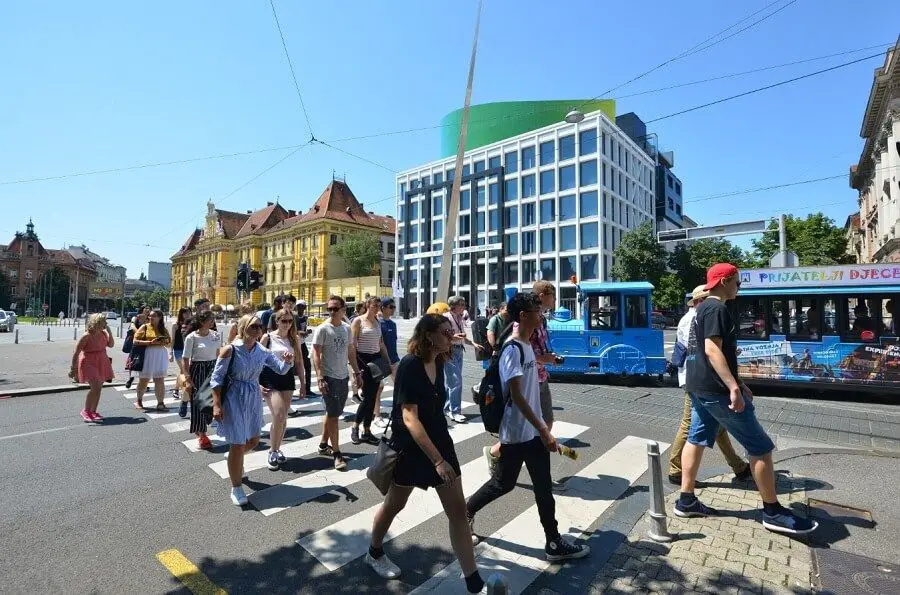
Not everything is about school, and I believe it was the wonderful Oscar Wilde who once hinted at the good old ‘’school of life’’ being the most important ‘’faculty’’ one can attend. Algebra is very much a school to prepare its students for real life, and works to properly equip its students for the world of work, and this isn’t just some tired old mantra, but a reality. The proof is there to be seen, and as many as 96% of Algebra’s students find employment within just six months of graduation.
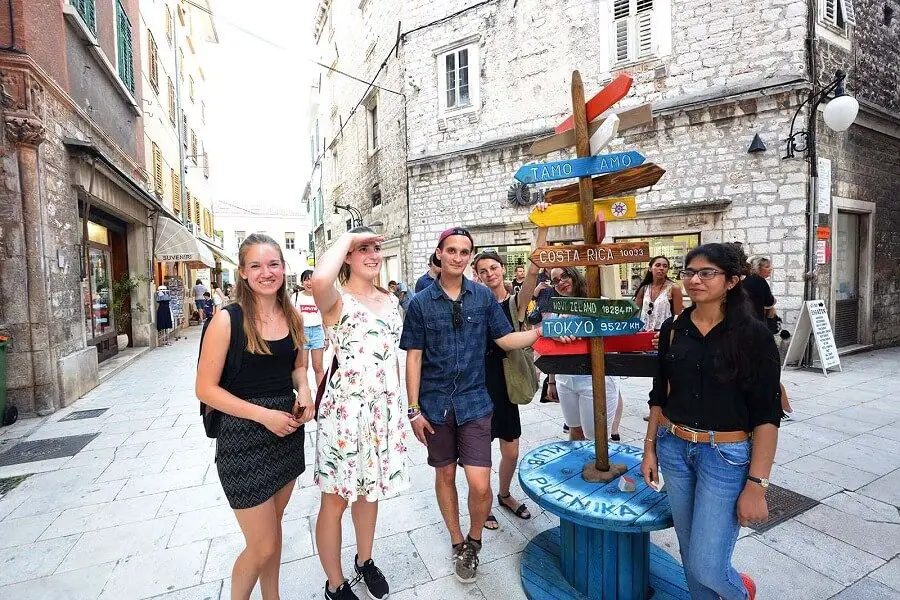
With bachelor and master programs not only in STEM, but in Arts as well, Algebra sets its students up for life in the world of work, and therefore sets itself apart as a summer school, caring less about being self-serving and more about creating the workforce of the future, and providing them with all of the necessary skills and knowledge to conquer everything from multimedia and programming to cyber security in an increasingly technological age dominated by artificial intelligence and Internet of Things.
With highly respected academic partners such as Microsoft, Oracle and IBM (just to name a few), it’s little to say that Algebra is a deeply trusted school.
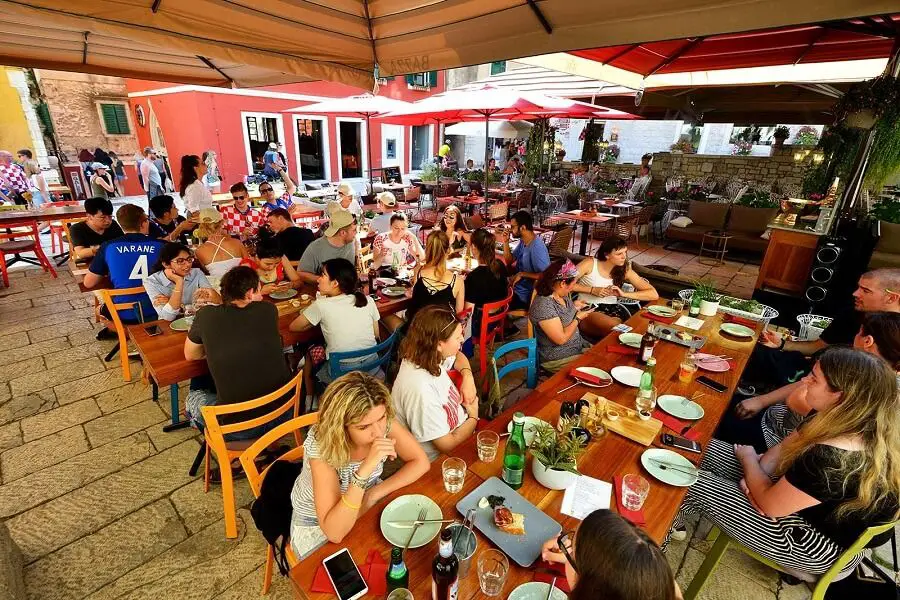
From artificial intelligence and cyber security to digital marketing and data driven storytelling, digital sculpting fundamentals and creating 3D projects, to the internet of things and mobile application development, this school is successful in keeping up with the modern world of education, and paving the way for the future employees of the modern world of work.
Lasting three weeks during the summer, Algebra prides itself on placing an emphasis on the exceptionally high quality of its study program, its lectures, professors and of course, its enviable curriculum. For the latter, it’s perhaps best to see what the students themselves say:
“I was overwhelmed by the quality of the course I completed and the university staff were beyond supportive and accommodating.”
“Every lesson was taught by an expert in that field, so I enjoyed the focus on practical and experimental aspect and not only on theory’’
“Algebra summer school exceeded all my expectations. Great staff, excellent lecturers and a warm atmosphere.”
“This program perfectly offers courses of very high quality taught by professors who not only are great at what they do but that are also excellent in communicating their knowledge. The fact that the classes are small also adds on the benefit of one-to-one interaction, with professors that have the time to go over doubts and help students personally without wasting too much time.”
„Everything I expected and more, the courses are very hand on, challenging and intensive, but rewarding“
„I expected practical knowledge, my idea was to learn how to contribute and do something with my own hands. The quality of teaching was spectacular. Classes are small so the professor could help us in any moment. We got to visit 2 cities, and emerge ourselves to Croatian culture.“
„I expected to learn as much as I could and have fun, but I also found a great lecturer, the teaching level was really high. You can learn a little bit every day.“
„This summer school is all about combining future professions, summer and friends. Very intensive courses, really good professors with great knowledge and intention to explain and overcome the problems and situations.“
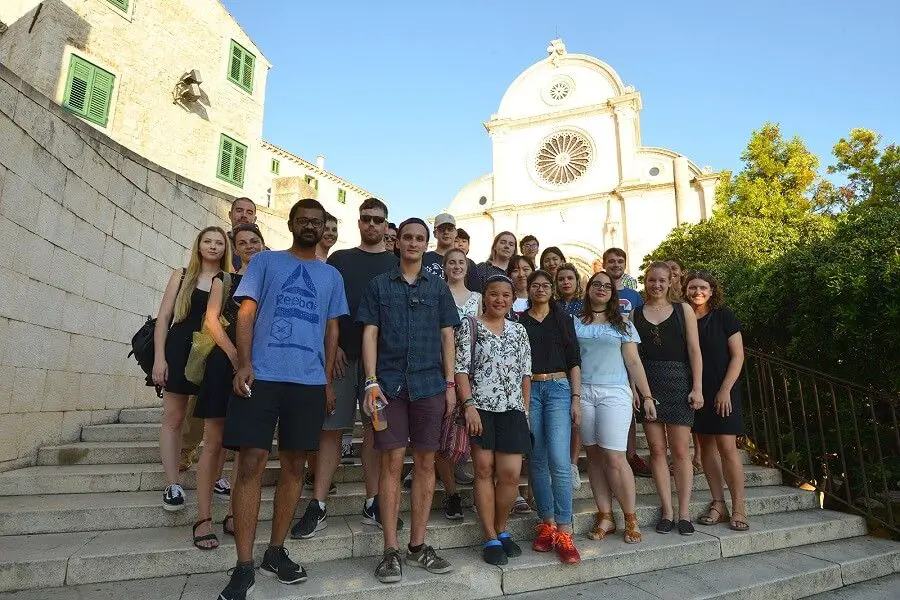
The old saying goes that the child in us dies when we stop wanting to learn new things. One can never know everything, as everything is always changing. This international summer school provides an excellent opportunity to learn something new in a way that truly inspires you. The university offers eight different courses which are both creative and very applicable, allowing for a summer spent gaining new skill sets and knowledge. Fancy trying your hand? Here’s what Algebra offers:
Digital marketing – New ways of communication
Data driven storytelling – Create stories using big data and advanced visualization
Digital sculpting fundamentals – Learn the basics of sculpting in Zbrush
Creating a Detailed Project in 3D – From the very basisc to the postproduction of the final image
Mobile application development – From idea to creation
Cyber security – The forc3 is strong with this one
Internet of Things – Create a weather measuring system with cloud visualization
Artificial Intelligence – Today and in the future
There’s nothing quite like meeting a person who happens to be interested in the same things you are, and is all in all likeminded. Algebra is the perfect place for that, and you’ll connect and make lifelong friendships with those who are also helping to shape the digital future. Here’s what was done last summer as part of a truly international experience.
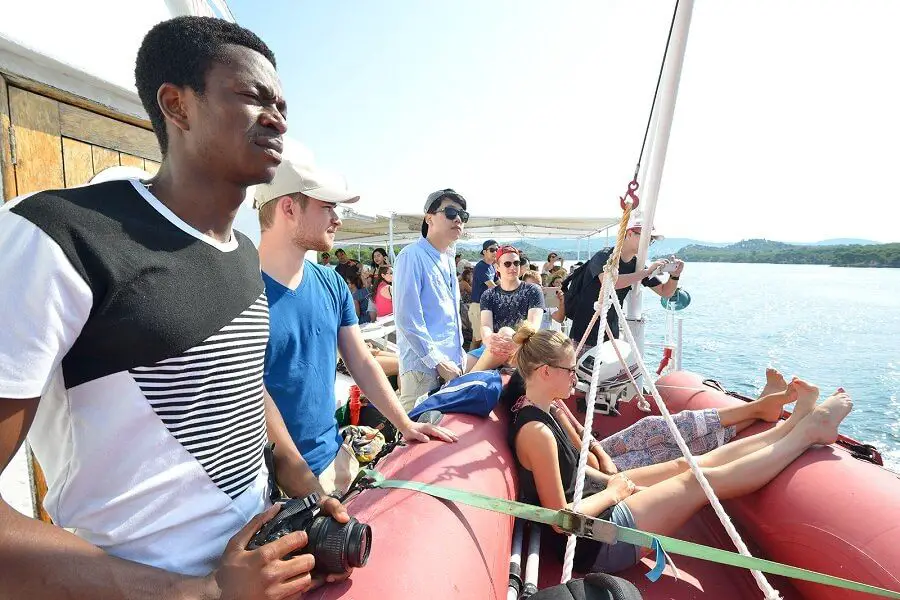
Travelling is something that almost everyone can agree is amazing. Sometimes you need to step out of your comfort zone in a new place to really discover who you are, and this is the perfect opportunity, not to mention the perfect country. Croatia boasts more than 1,000 beautiful islands and enjoys a massive 2700 hours of sunshine annually!
With Algebra, you’ll get to spend two weeks in the Croatian capital, which has close links to the Vienna, Venice, Budapest, Belgrade, Sarajevo and many more owing to its excellent geographical position. You’ll head down to the beautiful Dalmatian coast to the historic town of Sibenik during the height of the summer season. Sibenik is close to Krka National Park, Prvic island, and Smiljan, which is the birthplace of the genius Nikola Tesla.
Join Algebra from the 7th to the 27th of July, 2019, for an unforgettable learning experience in a summer school with a difference, the best in all of Europe.
Sounds good? If so, it’s time to get packing and looking forward to an incredible summer in Croatia. You’ve got until May the 20th to apply to the Algebra International Summer School, so the time is now to start planning the summer of a lifetime.
Ljubljana Castle is the most visited attraction in Slovenia, and each year it marks the beginning of the tourist season with Castle Days (Grajski dnevi), a series of free and varied events to welcome you up the hill, including reative workshops for children, a “search for the dragon's treasure” a medieval encampment, a knights tournament, and tours, with lost for all the famly to enjoy. This year the event runs from Friday, 17 May, to Sunday, 19 May, with most of the action being on the last day, from 10:00 to 18:00, when the Castle’s many attractions will be open to all.
Screenshot
Related: 25 Things to Know About Ljubljana Castle
Access to all the events is free, but some require a ticket as space is limited. These can be obtained from May 13 from the entry pavilion of the Castle and at the lower station of the cable car / funicular on Krekov trg, next to the Puppet Theatre, with one person able to get up to four free tickets at a time. During Castle Days there will also be a discount on funicular tickets.
Related: Ten Ways to Enjoy Ljubljana Castle
Be warned that many of the tours, including those for children, appear to be in Slovenian, which is why we’re not translating the details (found here). That said, the tours are only one aspect of the mini-festival, which will include a knights’ school for children (Saturday, 14:30), axe throwing, a medieval encampment (Sunday, 10:00 to 18:00), and this lively event is great way to see the building that has watched over the city for centuries, and to get in a holiday mood.
Slovenia has three wine regions. Podravje (the Drava Region), to the northeast; Posavje (the Sava Region) in the southeast; and Primorje (the Littoral), in the west, by the coast and Italy, including the famed Goriška Brda. The country also has seven native wine varieties: ranfol, žametna črnina (aka Blauer Kölner), rumeni plavec, zelen, pinela, vitovska grganja and rebula.
But I didn’t know that before I attended this event, organised by WineTasting Ljubljana. Or if I once did, briefly while the words flashed before my eyes or rung in my ears, then I forget. I only know it now because I took notes.
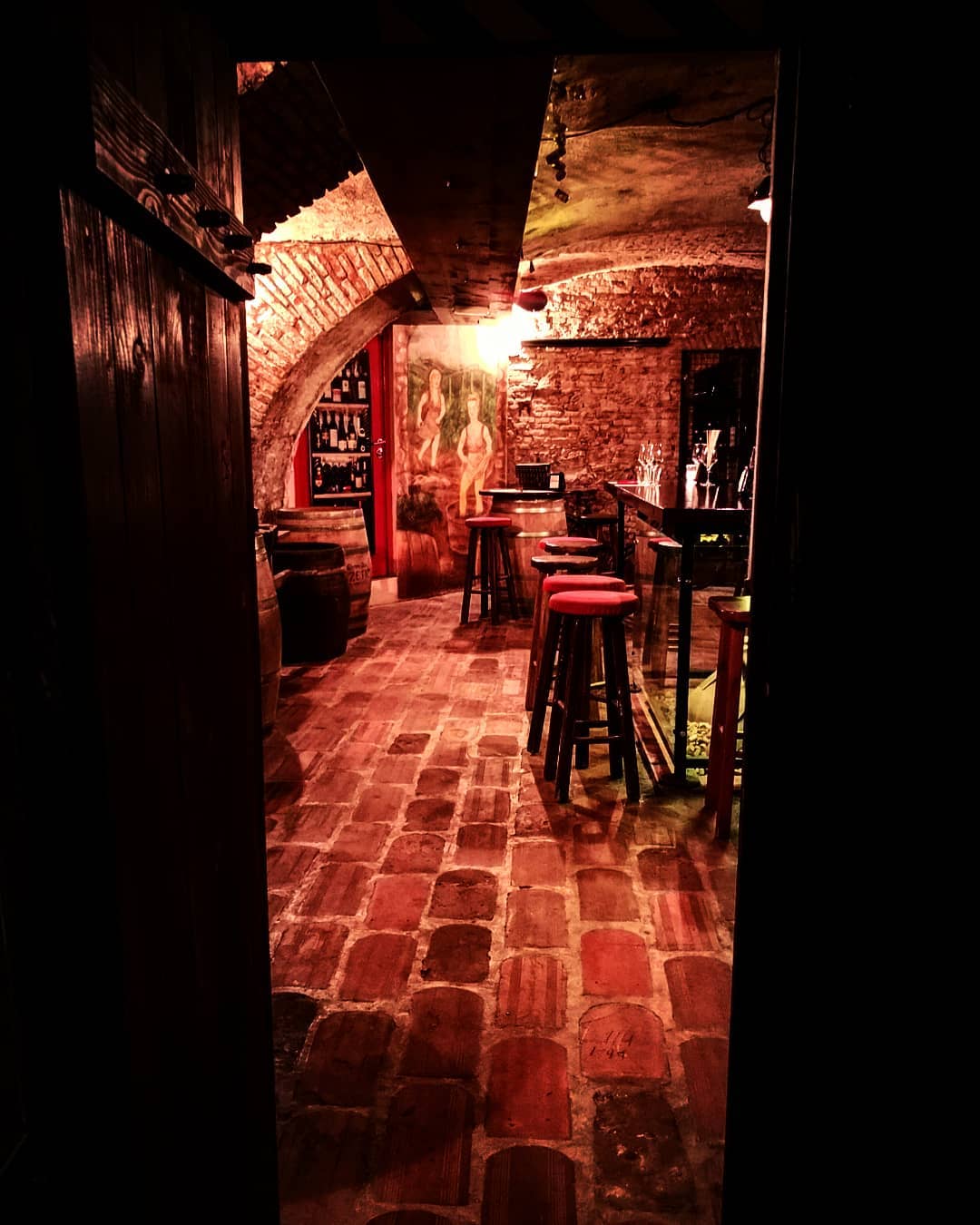
The wine celler under Dvorni Bar
A Slovenian wine tasting holiday in one evening
So in some ways I’m the ideal person for the wine tastings offered each evening by Wine Tasting Ljubljana. These don’t take you deep into one variety, but instead offer a tour of the country’s viticulture in seven glasses, one for each of the native varieties, with your guide (in my case the sommelier Boris Vukobrat), talking your through the experience.
Or as Boris put it: “You will drink, I will tell you stories.”
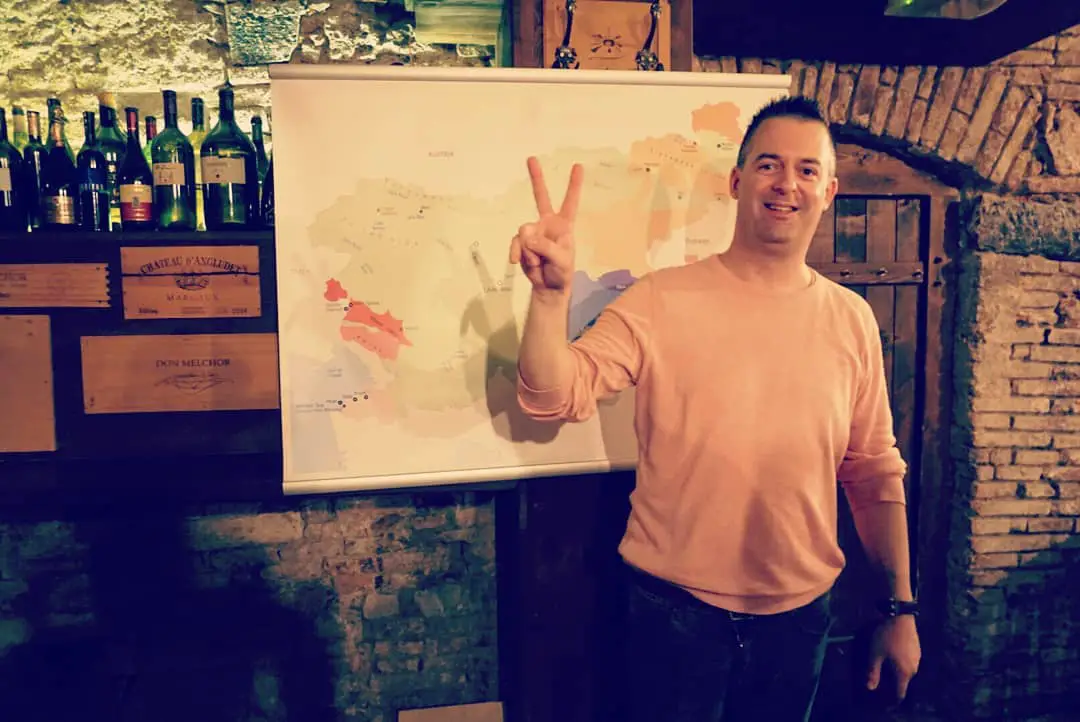
Boris - "The problem with Slovenian wine isn't quality, it's quantity. We don't really produce enough to export, so the best place to drink it is Slovenia."
The tastings take place in a 300-year old wine cellar beneath Dvorni Bar, just off Kongresni trg / Zvezda Park, and last for about 90 minutes. Whatever the weather outside, down in the cellar it’s cool and dim, with low lighting and candles giving the event a sense of occasion. There’s a map on the wall that Boris uses to show where the bottles come from, and some snacks on the table – cheese, olives, dried fruit, nuts, and pumpkin oil – to complement the wines, along some water and bread to cleanse the palate.
Boris knows his stuff, and also runs the same events in Bled, so I learned a lot. The evening starts with a light white, rebula, the kind of that’s dangerous because the low acidity means you can easily drink too much. It then moves to heavier whites, through a surprise wine (which we taste blindfolded), then into heavier reds, and ends with a dessert wine.
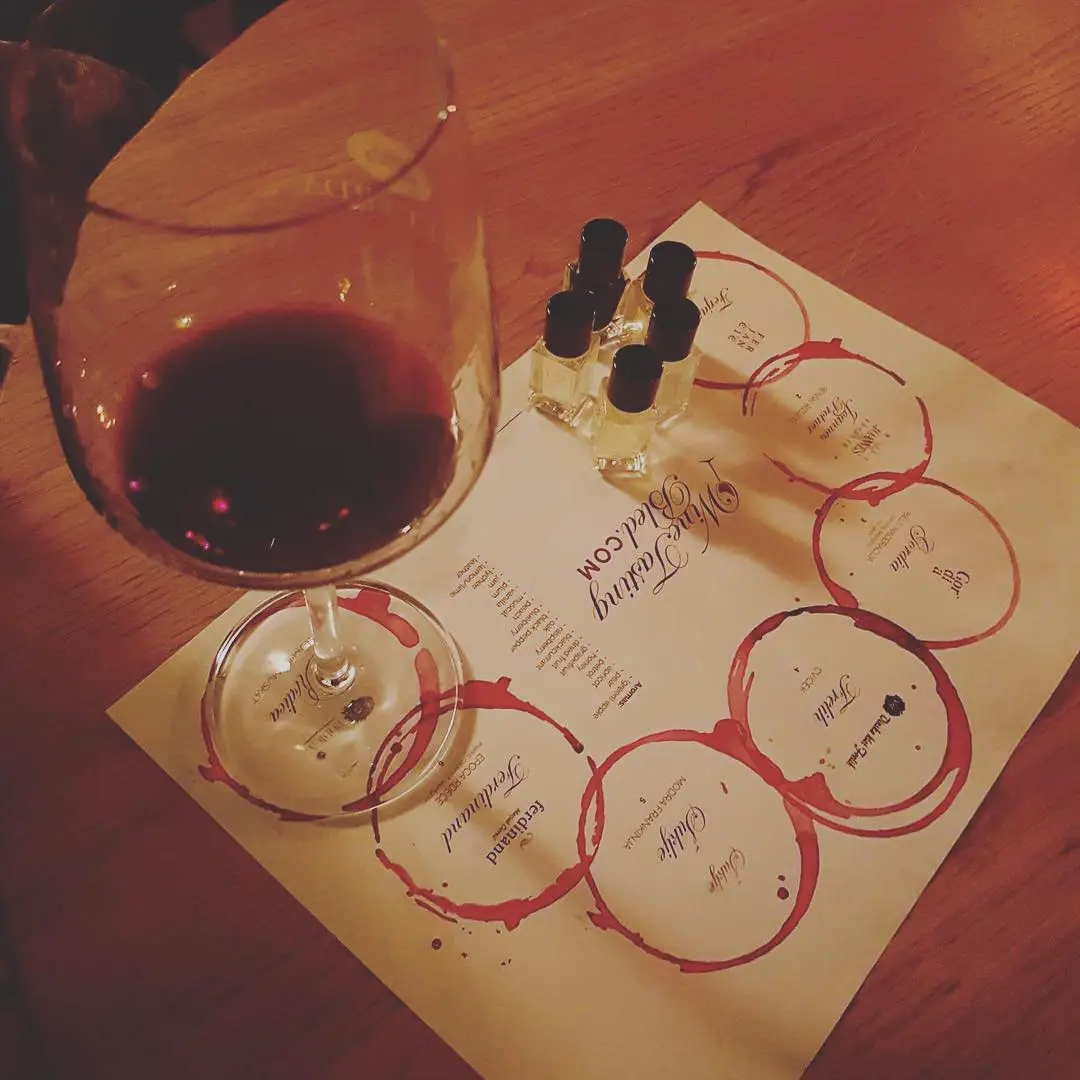
When each is poured, but before you drink it, Boris explains the some of the history and present of the wine, it’s relationship with the land, what to look out for when sampling it, and some suggested food pairings. You take your time and hold the glass up the light, swirl it around to see “the legs”, inhale the aromas – if there’s no vanilla, it was stored in steel; if there’s vanilla then in oak; if it smells like petrol then you’re drinking Riesling (one hopes). You’ll also learn some practical tips, perhaps the most important being that a low sulphur content means less risk of a hangover.
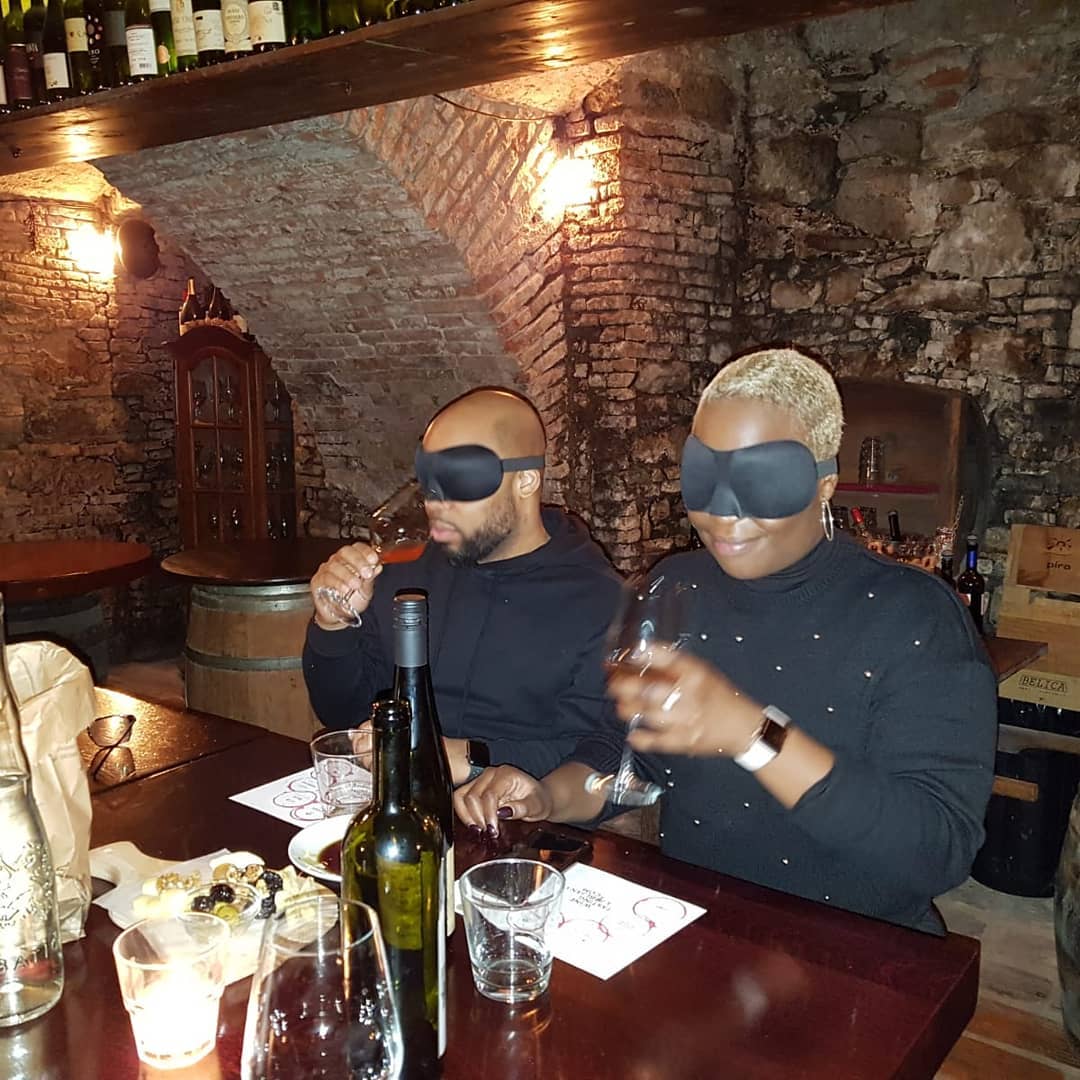
If you’re like me, and tend to drink too fast, anxious to find whatever magic is hiding at the bottom of a bottle, then the experience is a novel and enjoyable one. It’s nice to take things slow and have your hand held, to have someone help you stop and smell the flowers, vanilla, grapefruit, blackcurrant, lychee or gasoline, with one part of the tasting being a round of smelling certain concentrated aromas and trying to guess what they are. Being told the story of the wine and what to look out for before sampling it also primes you to be more attentive, to savour each inhalation or sip – to get more out of wine, and thus more out of life.
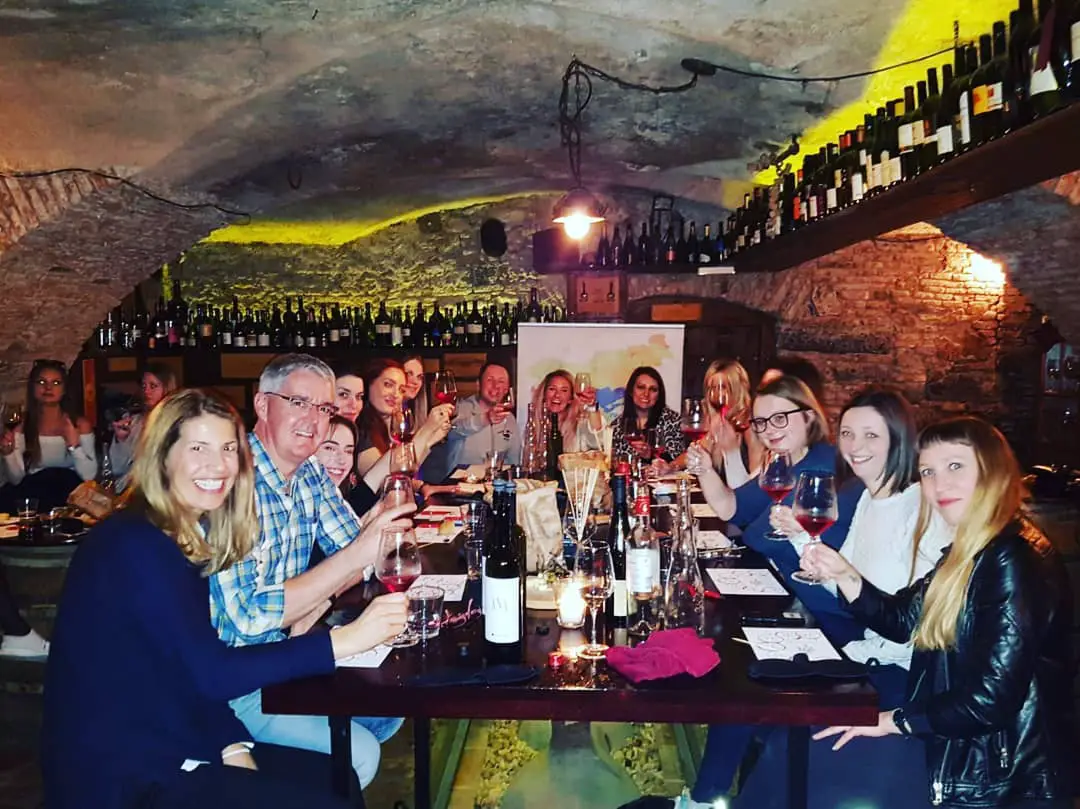
The glasses aren’t full pours, and you’re unlikely to get drunk, but if attending a 17:00 tasting you’ll leave at around 18:30 with a pleasant warmth, more joy and greater enthusiasm, making this a great start to a longer evening of fun. You’ll also have been taken on a short tour Slovenian wine varieties and regions without having to leave the centre of Ljubljana, and be able to order a glass or a bottle with more confidence.
To that end, Dvorni Bar itself, where the cellar and tastings are located, is a great place to carry out more in-depth research, with hundreds if not thousands of bottles. (I had a tiny after-wedding party there, spent over €400 and remember nothing but my wife’s name, but next time I’ll take notes.)
You can book a your place with Wine Tasting Ljubljana on the website, by This email address is being protected from spambots. You need JavaScript enabled to view it.or phone (00386 41 90 50 70), and if you’re staying in Bled the same group does a similar event there (details)
All our stories on wine in Slovenia can be found here
STA, 2 May 2019 - The international urban initiative Jane's Walk, which promotes walking and responsible city planning, will again also be embraced by several Slovenian cities this year.
Special guided tours, lasting roughly an hour and half and offering people a chance to explore hidden corners of cities, are scheduled throughout May and have been confirmed for 18 cities around the country so far.
Ljubljana's Upper Šiška borough will for instance already be explored this Sunday, while two more tours will be organised in the capital.
Related: Let's See the City - Ljubljana architectural walks and tours
Interesting small towns such as Tolmin, Litija, Črnomelj or Dravograd are also joining the initiative, which is coordinated in Slovenia by the Institute for Spatial Policies (Inštitut za politike prostora –IPoP), an urban planning NGO. A detailed list of the walks can be found on IPoP's website.
Named after Canadian activist Jane Jacobs, Jane's Walks are a global movement launched in 2007 and organised in Slovenia since 2011.
Related: Meet the People - Hayley Handford-Brown, Bringing the Streets Alive with Hand Drawn Adventure Maps
The free, citizen-led walking tours get people to tell stories about their communities, explore their cities, and connect with neighbours. They are also meant to stimulate reflection on existing and potential planning solutions.
The international website for Jane’s Walks, in English, is here
STA, 23 April 2019 - The Slovenian capital will host music greats yet again this summer as the Ljubljana Festival opens its doors on 2 July. The biggest names in the line-up include Zubin Mehta, Sergei Krylov and Svetlana Zakharovna.
Before the official start, tenor Placido Domingo will conduct Verdi's momentous Requiem on 17 June. The performance will feature solos by soprano Elvira Hasanagić, tenor Arturo Chacon-Cruz and basso Roberto Tagliavini. They will be accompanied by the Slovenian Philharmonic Choir and Orchestra and the Chorus of the SNG Opera and Ballet Ljubljana.
A performance of Giuseppe Verdi's Aida, one of the most well-known and most often performed operas in history, will officially open the festival. It will be a co-production between the Ljubljana Festival, the Croatian National Theatre in Split, the Slovenian Philharmonic and the SNG Maribor. Director Dražen Siriščević is said to have included several Lipizzaners in the performance.
Special emphasis focus will be on orchestras, of which the most notable will be the closing concert of the festival by the Israeli Philharmonic, conducted by the famed Zubin Mehta, the organisers told the press on Tuesday.
Other guests include Russian prima ballerina Svetlana Zakharovna, Italian contemporary dance company Arterballetto, Turin's Teatro Regio Theatre performing Verdi's Traviata, the Shenzhen Symphony Orchestra featuring Day Lin, the Seongnam Philharmonic Orchestra featuring Sergei Krylov on violin, the Munich Radio Orchestra, and the Bavarian Radio Symphony Orchestra conducted by Ivan Repušić.
There will be no shortage of solo performances, including by violinists Massimo Quarto and Alen Baev, flautist Massimo Mercelli and pianist Vadim Kolodenko.
The full programme, along with details of how to buy tickets, can be found on the related website, while a 132-page PDF version, in Slovene and English, can be seen or downloaded here


